



I met Eugenio Tisselli in Edinburgh at the Remediating the Social conference in November 2012. Eugenio gave a presentation on the project Sauti ya wakulima, “The voice of the farmers”: A collaborative knowledge base created by farmers from the Chambezi region of the Bagamoyo District in Tanzania, and “by gathering audiovisual evidence of their practices they use smartphones to publish images and voice recordings on the Internet”, documenting and sharing their daily practices.
I was struck by his sensitivity to the social contexts and political questions around this type of project engagement. This interview explores the challenges we all face in connecting to a deeper understanding of what technology can succeed in doing beyond the usual hype of the ‘New’ and its entwined consumerist diversions. Not only does the conversation highlight how communities can work together in collaborating with technology on their own terms. But, it also discusses the artists’ role in the age of climate change and the economic crisis, locally and globally.
Marc Garrett: Can you explain how and why the Sauti ya wakulima, “The voice of the farmers” project came about?
Eugenio Tisselli: Sauti ya wakulima is the fruit of my collaboration in the megafone project, started in 2004 by Catalan artist Antoni Abad. During six years, we worked with different groups at risk of social exclusion, such as disabled people, immigrants or refugees. The idea was to provide these groups with the tools to make their voices heard: smartphones with a special application that made it easy to capture images, sound recordings or short videos, and a web page where these contents could be directly uploaded. Using these tools, the participants of each project were able to create a collaborative, online “community memory”, in which they could include whatever they considered to be relevant. Although megafone was relatively successful and, in some cases, made a positive impact on the people who participated, I was worried that the project was becoming too dispersive. We worked in six countries, with extremely different groups. So, in 2011, I decided to follow my own path and apply a similar methodology into more focused projects, related with sustainable agriculture and environmental issues. I realized that the projects which sought to increase the empowerment of a community could become too complex for a single artist to handle. That’s why, in Sauti ya wakulima, I’m not “the artist”, but a member of a transdisciplinary team which includes biologists, agricultural scientists and technicians. Such a team came together after my PhD advisor Angelika Hilbeck, my colleague Juanita Sclaepfer-Miller and myself came across the possibility of working with farmers in Tanzania. The network formed by local researchers, farmers and ourselves was quickly formed, so we started the project on March, 2011.
MG: I find it interesting that you made the decision to put the role of artist aside. This reminds me of a discussion in Suzi Gablik’s book published in 1995 ‘Conversations before the end of time’; where James Hillman in an interview talks about learning to refocus our attention from ourselves and onto the world. Further into the conversation Gablik says “In our culture, the notion of art being a service to anything is an anathema. Service has been totally deleted from our view point. Aesthetics doesn’t serve anything but itself and its own ends”.[2]
So, I have two questions here. The first is how important was it for you to put aside your status as an ‘artist’, and what difference did it make?
And, where do you think you and others may fit when considering the discussion between Gablik and Hillman?
ET: It is important for me to make it clear that I didn’t abandon my role as an artist. Instead, I fully assumed my status, but only as a member of a transdisciplinary team. I believe that this may be a point of departure from the classical view of the artist as a “lone genius”, which is closely related to the discussion about service in art. So I’ll try to interweave both questions together. In a recent publication, Pablo Helguera aimed to set a curriculum for socially engaged art. He identified the new set of skills to be acquired by the artists, and the issues they must address when dealing with social interaction. But, as Helguera suggests, perhaps what’s most important is to overcome the “prevailing cult of the individual artist”, which becomes problematic for those whose goal is “to work with others, generally in collaborative projects with democratic ideals.” [3] To me, this implies that the artist must give up control of the work to a certain degree. I find myself in this scenario, and I think of my role in Sauti ya wakulima as that of an instigator and coordinator. Furthermore, all of us involved in Sauti ya wakulima aim to effect actual changes in the lives of the participating farmers, rather than obtaining purely symbolic results. Our project is a socially engaged artwork that wants to be useful, to deliver a service.
We are living in urgent times, beyond any doubt. Looming global challenges, such as climate change, radically cancel the luxury of being useless, of not doing anything. This includes the artist who, as any other citizen, is called to use his or her abilities to help in preventing a catastrophe. I especially like Franco “Bifo” Berardi’s proposal about the new task that the artist might assume: that of reconstructing the conditions for social solidarity. This work of reconstruction would oppose competition, a value often found in the markets that deal with self-referential, self-serving artworks. Solidarity, writes Berardi, is neither an ethical nor a political program, but a pure aesthetic pleasure [4]. In my opinion, the artists who still embrace the idea that art should only serve its own ends will become those who play the lyre while our world burns.

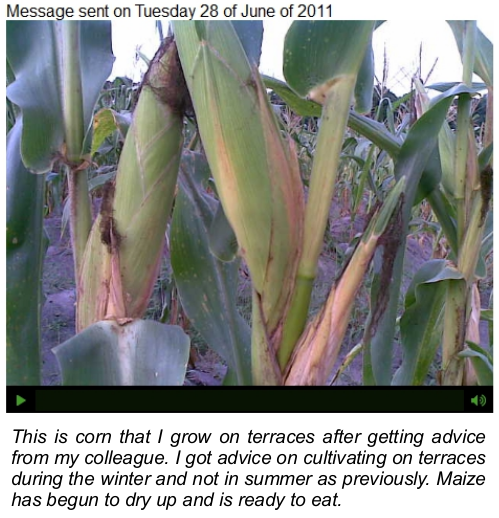
MG: What kind of behaviours began to emerge once the farmers took control of the smartphones supplied?
ET: It was quite interesting to see that the farmers started to use the phones for purposes which were different from those that we had originally proposed. This happened very soon after the project started. Only one month had passed, and the farmers had already started to go beyond merely documenting the effects of climate change. They interviewed other farmers, and asked them all sorts of questions about their crops and agricultural techniques, their opinions and views. In short, they slowly laid out a web of mutual learning. This was a real eye-opener for us. As we began to observe this, the environmental researchers in the team became worried that the farmers were deviating from the goals that we had set. I wanted to leave room for this deviation, as I was particularly interested in studying the process of technological appropriation. So I had to convince the researchers that we should leave enough room for the farmers to freely explore the potentials of the smartphones. It was not easy but, in the end, negotiating the tensions between a goal-oriented and an open-ended research turned out to be quite fruitful.
On one hand, the farmers found that they could shape the project to fit their interests which, as they said, were to “learn about what other farmers in remote areas were doing.” On the other, the researchers finally realized that the images and voice narrations posted by the farmers were an invaluable source of information about what was actually going on in the farms and within the communities. Sometimes, agricultural initiatives may be designed with an insufficient understanding of the social context in which they are applied. By allowing the farmers to publish a wide range of topics, Sauti ya wakulima became a “community memory” that reveals rich details about farming and the social life of rural communities in Bagamoyo.

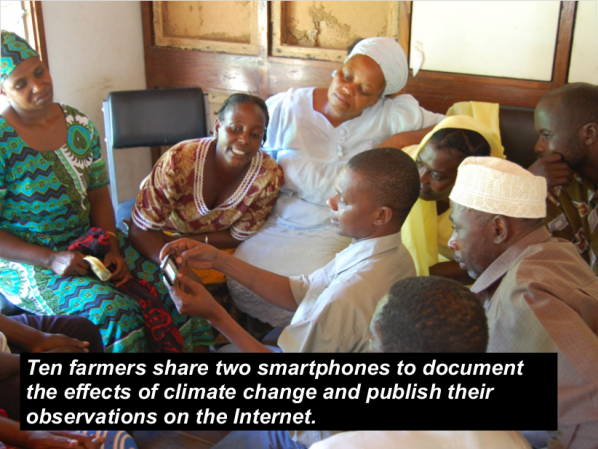
MG: In your presentation at Remediating the Social, I remember a quote from one of the farmers saying “The project helped me learn that phones can be used for other things besides calling people, and that computers can also be used to solve problems: they are not just a fancy thing for the rich people in towns.” What’s interesting here is, these words could be said any where. And that our consumer orientated culture could still learn a few things regarding uses of technology.
What lessons can the farmers teach ‘us’ in a culture where computers are part of the everyday life?
ET: I have interpreted this particular quote in two different ways. The first, most obvious one, is that the farmers discovered that the smartphones and the web can be useful tools, which may be shaped and adapted to meet their needs. For many of them, Sauti ya wakulima was their first chance at trying out these technologies. And, happily, the project showed us all that they can become an important ingredient in making farmers’ lives a little better.
However, my second interpretation is not as optimistic: in the quote, there is an explicit comparison between the (poor) farmers living in remote areas and “the rich people in towns.” Moreover, the fact that smartphones are explicitly considered as fancy devices points towards issues which need to be handled very carefully. In every part of the world, technological gadgets are quickly becoming symbols of social status. Currently, I am working in a rural zone in southern Mexico where cellphone coverage was nonexistent only two years ago. But as soon as the first antennas were installed, young people in those communities started buying smartphones, and now there is an open competition to see who has the fanciest one. A similar thing happens in Bagamoyo.
So, of course, smartphones can be useful tools, but they can also bring more consumerism into poor communities. This is very dangerous. I’d like to stress that, in our project, the smartphones are used as shared tools. This means that there is a limited number of devices available, and everyone must have a chance to use them at least once. I believe that this is a small but significant contribution towards diluting the extreme individualism and consumerism that are closely linked to these technologies.
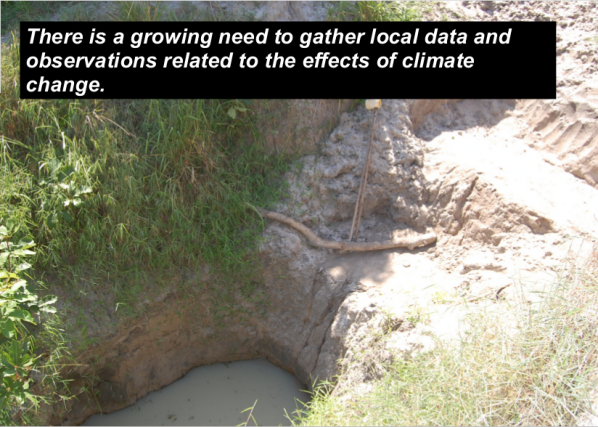
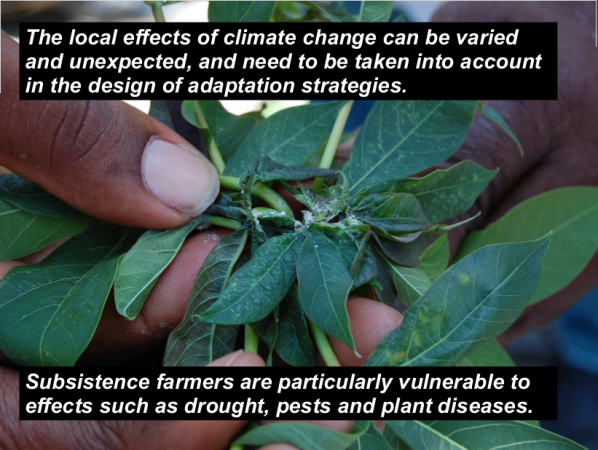
The farmers I have met in Bagamoyo have a very strong sense of community. Although their farms can be very far apart, sometimes with no roads between them, they still get together very often. They work together, learn together, have fun together. That’s the biggest lesson I’ve learned: we need each other’s presence. Quoting “Bifo” again, we are living in a time of precarization of the encounter of bodies in physical space. I agree with him that the most important poetic revolution has to be the re-activation of bodies. The farmers, with the great efforts they make to get together, and the great joy they find in doing so, have taught me a great deal: I need to get out of Facebook and step in to the “here and now”, together with others.
MG: What has this experience taught you. And how will it impact your future practice as an artist?
ET: I have partially replied to the first part of this question. But besides learning how to re-dimension the importance of computers in my life, I have also learnt a lot about agriculture. This is not a minor thing for me: after all these years of living in big cities, and realizing that I lack a basic connection to the earth, I believe I have found the best possible teachers. Of course, I’ve also learnt a lot about how to work with non-expert users of technology. This has made me better as a teacher. And, as you can imagine, many of the things we take for granted at home won’t necessarily work in Bagamoyo. So, doing projects in difficult environments has taught me to adapt, and to transform things that escape my control into opportunities. All of this changes me, not only as an artist but as a human being. My artistic practice is already quite different from what it was before Sauti ya wakulima. I have adopted a very critical position towards technology. Now, this is also a major shift: I started programming creatively when I was ten years old, and have been a media artist almost since then. But I feel I can’t go on with those artistic explorations, knowing what I know now. Consequently, last year I wrote and published a small note explaining why I stopped creating works of e-Literature, a field in which I was involved for more than ten years [5]. That was both a closure and a point of departure. Let’s see what the future brings.
Excerpt from ‘Why I have stopped creating e-Lit’ by Tisselli (November 25th, 2011)
Dear friends: this morning I went for a walk along the Naviglio Grande in Milan, and I entered a shop selling second-hand books. There I found a small book, “The Computer in Art”, by Jasia Reichardt, published in London in 1971. The book described the works of pioneers of Computer Art, such as Charles Csuri or Michael Noll, who were active at that time. A real gem. But the biggest surprise came when I turned to the last page, on which the previous owner had written: “I married on 23, November. I would like to be a man, not artist, not engineer, a man.”
I took the book with me.
Those involved in the Sauti ya wakulima / The voice of the farmers project.
The farmers: Abdallah Jumanne, Mwinyimvua Mohamedi, Fatuma Ngomero, Rehema Maganga, Haeshi Shabani, Renada Msaki, Hamisi Rajabu, Ali Isha Salum, Imani Mlooka, Sina
Rafael.
Group coordinator / extension officer: Mr. Hamza S. Suleyman
Scientific advisors: Dr. Angelika Hilbeck (ETHZ), Dr. Flora Ismail (UDSM)
Programming: Eugenio Tisselli, Lluís Gómez
Translation: Cecilia Leweri
Graphic design: Joana Moll, Eugenio Tisselli
Project by: Eugenio Tisselli, Angelika Hilbeck, Juanita Schläpfer-Miller
Sponsored by: The North-South Center, Swiss Federal Institute of Technology – Zürich
With the support of: The Department of Botany, University of Dar es Salaam (UDSM)
Featured image: Environmental Risk Assessment Rover – ERAR – AT (2008) Mobile, Solar Powered, Networked Installation Off the Grid, Neuberger Mus
Refusing to regard technology merely as a tool, Ecoarttech expand the uses of mobile technology and digital networks revealing them to be fundamental components of the way we experience our environment. Their most recent work Indeterminate Hikes + (IH +) is a phone app that maps a series of trails through the city. IH + can be accessed globally, or wherever users have access to Google Maps on their mobile phones. After identifying the users’ location, IH + generates a route along random “Scenic Vistas” within urban spaces. Users are directed to perform a series of tasks along the trail and provide feedback in the form of snapshots generating an ongoing, open-ended dialogue.
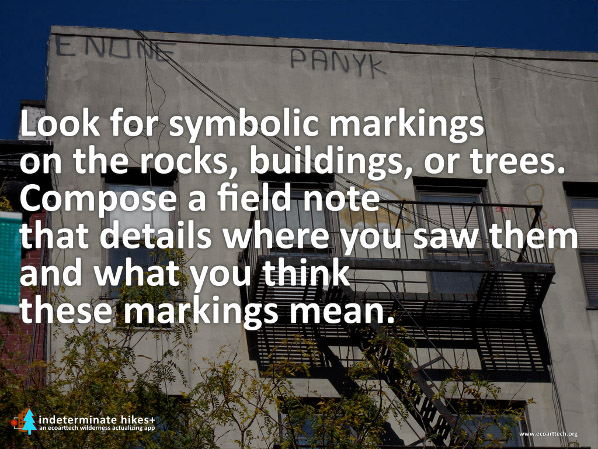
But the experience of their work is primarily an encounter with technology. Since 2005, Leila Nadir and Cary Peppermint of Ecoarttech have been engaged in an artistic exploration of environmental sustainability and convergent media. By drawing our attention to the increasing replacement or mediation of physical experiences by technology, Ecoarttech challenge the widely reproduced distinction between nature and culture. They present their work in the form of videos, digital networks, blogs, performance and installations. Their early video-based work (Wilderness Trouble and Frontier Mythology) plays out a performative and ironic encounter with the natural environment as a historically constructed concept. In the summer of 2005 Ecoarttech made A Series of Practical Performances in the Wilderness (2005) a database networked performance in QuickTime (DVD and Podcast). The short clips document what Ecoarttech ironically describe as “the experiences of two New Yorkers embarking on their first four months in the woods“. Their objectives were nothing short of
…establishing a functional home without running water, electricity, or maintained roads; developing relationships with locals; un-learning the romanticization of nature while re-learning humanity’s dependence on the environment for survival; and researching the details of the history of the land and the surrounding area.
Sophia Kosmaoglou: The confrontation with the concept of “wilderness” appears to motivate much of your work to date. How did A Series of Practical Performances in the Wilderness begin and how did you fare?
Leila Nadir and Cary Peppermint: About eight years ago, we were very fortunate to acquire a primitive cabin on 50 acres of wild, wooded land, and the experiences we had there changed us completely. Each time we drove from NYC to our “camp” as the locals called it, we were immobilized for about 3-4 days, hardly able to move our bodies as our nervous systems screeched to a halt, adjusting to the quiet. We found a freedom in the woods that we couldn’t find the city – the freedom to take up space, to play, to be quiet, slow, and still. We were also amazed by how some people in the country could seemingly live more independently from bloated global economic systems, growing their own food, chopping their own fuel, harvesting solar energy. They interacted directly with the natural environment whereas we had spent our entire lives ecologically infantilized by overdependence on the industrial grid. We began spending several months at a time at our cabin in the woods: A Series of Practical Performances in the Wilderness is a document of our environmental adventures at that time. It was our first attempt at making art in remote, wilderness spaces. It was a sort of performance of ecological/cultural collision.
SK: How did this experience inform your subsequent work?
LN & CP: As we began to study environmental theory, we realized that not only does little “true” wilderness actually exist, the myth of wilderness was used to obscure the history of indigenous people living on the North American continent. Our own land, we learned, had once been a pasture and had been logged numerous times. Coming to terms with the fact that we hadn’t really retreating to “nature” was the focus of our video Wilderness Trouble which attempts to imagine a new kind of environmental ethics that includes urban and electronic spaces and modern networked culture. However, we still believe that wilderness provides a lot of imaginative potential. Amazement at sublime landscapes can provoke an emotional response that can be politically motivating, and we have tried to take advantage of that potential in our smartphone app Indeterminate Hikes +. By importing the rhetoric of wilderness into everyday life through Google-mapped hiking trails, the app attempts to inspire a sense of ecological wonder at usually disregarded spaces, such as city sidewalks, alleyways, and apartment buildings. We wanted to see what would happen if a walk down a sidewalk were treated as a wilderness excursion. What if we consider the water dripping off an air-conditioner with the same attention that we give a spectacular waterfall in the wilderness?
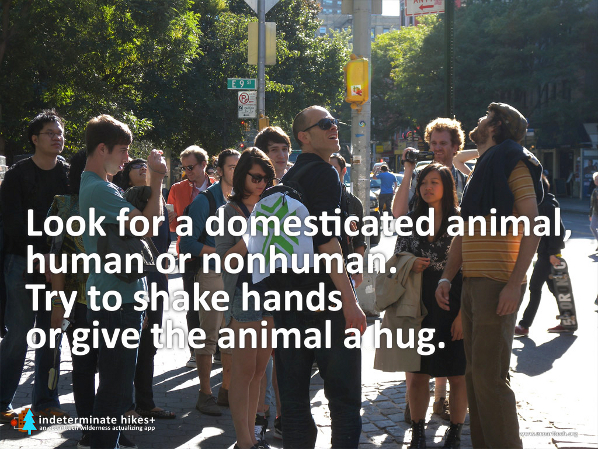
SK: There is a recurring effort in your work to question the opposition between environment and technology, which is usually accompanied by an ironic undercurrent in your narration and editing that acknowledges what you call “cultural collision”. In Google is a National Park and Nature is a Search Engine which is also part of a series of performances called Center for Wildness in the Everyday (2010), itself conceived as an ecosystem, you suggest that an “environment” is a network of relationships common to natural as well as technological systems, whether it is the ecosystem of a river estuary or Google. Do you see this as a sustainable analogy or a productive contradiction?
LN & CP: Part of what we find frustrating about a lot of environmental thought is that it either wholly rejects technology as the cause of ecological crises so our only solution is to go primitive or wholly embraces technological progress as a saviour, which often means we have to trust in corporate and scientific innovation to lead the way. We think there is another way. We see humans as essentially technical beings: human-animals literally cannot survive without technics. The U.S. military survival guide comes right out and admits that your situation is pretty hopeless if you are stranded in the wilderness without at least a knife. If technology is part of who we are – and we find Bernard Stiegler’s work helpful for thinking this through – then we have also evolved with technology. We are not the same sorts of humans as, for example, Leila’s great-grandmothers in Slovakia or Afghanistan a century ago. The question, then, is not, Yes or No to Technology, but rather, How do we engage technology sustainably and in a way that supports creativity and freedom? And if human beings are technical beings, relying on nature and culture simultaneously, is it even possible to distinguish between what’s natural and what’s not? Isn’t our sustenance dependent upon not only our biological needs (clean air, water and food) but also our cultural practices, beliefs, and imagination? This is why we find it essential to think about electronic spaces and digital technologies whenever we think about the “environment.”
The installation called Google is a National Park and Nature is a Search Engine, a work that is part of a series of performances called Center for Wildness in the Everyday commissioned by the University of North Texas. Our task for this commission was to create a networked artwork about the Trinity River Basin, the source of water for the Dallas/Fort Worth metroplex. In the image, the Trinity River looks like a space of natural refuge but the scientists we worked with there explained that the River’s flow is guaranteed only by the recycling of waste water at treatment plants. We wanted to create a work that juxtaposed this hidden constructedness of “nature” with the more obvious man-made Google – two processes or entities that we rely on everyday for our ecological sustenance: water management and online information.
SK: In 2008, you made the Environmental Risk Assessment Rover, a solar-powered module, which gathers and projects information regarding threats in the immediate environment. Although the ERAR is a sizeable aggregate of equipment that is carted around in a wagon, it seems to be the precursor to handy mobile phone apps. How does the ERAR work?
LN & CP: This project is part of our ongoing engagement with science – especially environmental science, which is also a focus of our 2009 work Eclipse. When you work at the crossroads of art and science, as we do, there is often an assumption that the role of the arts in this interdisciplinary exchange is to visualize or communicate knowledge produced by scientists. In contrast, ERAR asks what we learn when science breaks down – or when we use science to “interrupt” experience rather than to predict behaviours. The project arose out of our observations of the U.S. Department of Homeland Security’s handy yet arguably useless colour-coded terror alert system launched post 9/11 and our experiences with what risk theorist Ulrich Beck calls “science’s monopoly on truth”. Somewhere Beck writes that cows can turn blue next to a chemical plant, but unless science actually proves that the chemicals are the cause of the blue, nothing will be done about the situation. So although other forms of knowing might tell us that the plant is a public health risk, there is nothing we can do until Science “proves” a direct causal relationship. The Rover collects real-time risk data relative to its GPS coordinates, such as car or subway accidents, air pollution levels, violent crimes, proximity of superfund sites, and ground water toxicity, and then determines the aggregate local threat level through a 14-tiered alert system, ranging from “Holiday Shopping” and “Plastic Bags” to “Girls Gone Wild” and “Ask Your Doctor”. Obviously there is a bit of Dada in this work – but not Dada as simple chaos, as it is popularly invoked, but rather Dada as a shocking exposure of the limits of modern reason at the same time as it brings to the surface something that many of us have repressed from consciousness: the subliminal knowledge that there are ways of knowing the world that come from non-scientific experiences and observations. This tension between scientific expertise and everyday experience is also at play in our recent work #TrainingYRHuman.
SK: Have you considered launching it as a phone app?
LN & CP: The ERAR was our first truly mobile work, and it would probably make an interesting phone app – however, the public spectacle it creates is integral to the effectiveness of the work. Pulling around a wagon of technological parts that beams alerts onto the side of buildings is an art action and an effective conversation starter.
SK: Social networks and mobile phone app technology have rapidly become established means of communication and art galleries currently employ these technologies conventionally to replace audio guides. Your current work explores social networks and phone apps as potentially innovative platforms for art. Indeterminate Hikes + (2012) and #TrainingYRHuman (2011) can be accessed in diverse contexts and within everyday activities. They address a broad public, providing a plurality of entry points without necessarily being identified as art. How has the public responded to these projects so far and how do you hope to see them pan out in the long-term?
LN & CP: What motivates us most about working with new technologies is how they can be misused for unexpected purposes. Smartphones, generally, are deployed as devices of rapid communication and consumerism, to get you what you want and where you want as quickly as possible. Our app Indeterminate Hikes + reappropriates this mobile technology for a very different end, turning smartphones into tools of environmental imagination and meditative wonder. It transforms ubiquitous computing into an opportunity to notice the happenings occurring all around us in our local environments, to see sublimity in our backyards, alleyways, streets and neighbourhoods. Like many of our works, this is also a way to aesthetically pose an alternative to environmentalism’s frequent anti-media stance and to popular culture’s uncritical embrace of technology. We want to dream new ways of being without falling into prescribed behaviours or reactionary responses, whether with the food we eat, the technologies we interact with, or the environmental relations we imagine. Foucault’s call for the creation of “gay style” as an antidote to heteronormative culture has always resonated with us in our attempts to rethink dominant ways of being: what is the space of freedom in which one can intervene and express oneself, invent, upend? The mood after our public indeterminate hikes is often euphoric, and participant-hikers comment that they see the world anew. If enabled to be, smartphones can be a platform for chance operations, which, as Allen Kaprow explained, can create “near-miracles”: “when something goes ‘wrong,’ something far more ‘right,’ more revelatory, has many times emerged”. Our app can be used anywhere, any time, by anyone who has an Android phone or who attends our performances, so hopefully there will be many people misusing their smartphones and taking wilderness hikes in the wrong places for a long time. An iPhone version will be released this spring/summer 2012.

#TrainingYRHuman, a work-in-progress, is a participatory Twitter-based net artwork about the agency of animals who live with human-animals as well as an attempt to speak back to science’s monopoly on truth. In recent years, a burst of scientific research has illuminated animals’ behaviours, ethical attitudes, modes of cognition, and psychological awareness, yet usually when we read news of this work, we think: Were all those scientific tests really necessary to figure out that a certain animal species has feelings? Many people who work and live closely with animals already had abundant anecdotal evidence to support the fact that nonhuman animals have diverse personalities and creative problem-solving skills, that they think, feel, and are conscious. #TrainingYRHuman is a gesture toward bringing those anecdotes into the public record, toward creating a sort of oral history database of animal-agency stories that usually only circulate subliminally in our informal conversations. At the same time, it is a moment for human-Tweeters to imagine what it’s like to be a nonhuman animal, inventing unique ways to express oneself and meet one’s needs and desires in a human-dominated world.
SK: There are multiple registers and modes of address in your work and an ambiguity regarding the speaking subject. To an extent, this is because there are two of you, but you also construct voices and use various techniques to create further ambiguity around your agency. Can you elaborate on your strategies of collaboration and decision-making and how these relate to the tension and displacement that you create between the cultural and the technological, the physical and the digital, the artistic and the scientific, the collective and the individual?
LN & CP: Our primary collaborators are each other. Though we have a division of labour, we don’t have a conscious strategy of how we work conceptually, perhaps because we fell into making art together organically, out of collaborating on life. Ideas emerge for us out of an ongoing, sometimes unconscious, sometimes over-analytical, conversation that meanders through the digital/physical places we inhabit, whether we are in our studio or the kitchen. Whose idea it was to add orange juice to our hummus recipe or who came up with facilitating alter-wilderness hikes via smartphones is impossible to figure out. We are committed to an experimentality in process that involves interaction, exchange, exposure, and research that can take advantage of the energy created by blurring the lines between self and other. Proprietary works and the myth of the “genius” artist are detrimental to emerging modes of working, especially with regard to new media art production. Lately, animals have been a significant part of this process for us, shaking up our stale human behaviours and assumptions, especially the cows, sheep, and pigs we visited recently at the Farm Sanctuary in Watkins Glen, NYState, and the birds of prey we met through a local bird sanctuary called Friends with Feathers.
We can’t really say with authority whether our extended collaboration relates to the ambiguities of our artworks. However, we do try to welcome the breakdown of categories like digital, physical, human, nature, and animal as well as media, disciplinary, and environmental boundaries. What really is a “human”, and why has there been this historical obsession with somehow distinguishing humans from animals, as if we are somehow specially different from every other animate being on earth, more evolved and complex? As eco-critic Timothy Morton said recently, “According to evolution science, there are two things humans do very well, but they are a bit of an ego blow: throwing and sweating. Everything else is also done by nonhumans, including consciousness, feelings, art, tool use”. So we are simply sweaty throwers who think very highly of ourselves! It seems to us that the effort to hold tight to definitions, to reliable knowledge, or to the self blocks the more interesting conflations that happen (or are already happening) when we let categories slip away. Therefore, rather than try to determine, define, and predict in our art, we are more interested in staging fluid experiences that ask difficult questions and interrupt our sense of certainty. When assumptions fail, things fall apart, and we can’t depend on what we think we know, that is when our most creative thinking takes place. These are exciting, experimental moments.
Leila Nadir and Cary Peppermint founded Ecoarttech in 2005. They teach Video Art and Sustainability Studies at the University of Rochester in New York and they work with a range of institutions, including the Whitney Museum, Turbulence.org and the University of North Texas. They have exhibited at MIT Media Lab, Smackmellon Gallery, European Media Art Festival, Exit Art Gallery and the Neuberger Museum of Art. In June 2012, they will be artists in residence at Joya: Arte+Ecología, an off-the-grid residency program based at Cortijada Los Gázquez in Parque Natural Sierra Maria-Los Velez in Eastern Andalucía.
TO BOOK YOUR PLACE NOW please email ale[at]furtherfield[dot]org
Over the last decade the awareness of anthropogenic climate change has emerged in parallel with global digital communication networks. In the context of environmental and economic collapse people around the world are seeking alternative visions of prosperity and sustainable ways of living.
While the legacy of the carbon fuelled Industrial Revolution plays itself out, we find ourselves grappling with questions about the future implications of fast-evolving global digital infrastructure. By their very nature the new tools, networks and behaviours of productivity, exchange and cooperation between humans and machines grow and develop at an accelerated rate.
The ideas for this transdisciplinary panel have grown out of Furtherfield’s Media Art Ecologies programme and will explore the impact of digital culture on climate change, developing themes adopted in grass-roots, emerging and established practices in art, design and science. The discussion will inform a second event in September at ISEA 2011 where we will be joined by artists Tom Corby and Helen Varley Jamieson.
Chair: John Hartley
Speakers: –
Michel Bauwens – On how Peer to Peer thought and technology point towards alternative production methods and a sustainable future.
Catherine Bottrill – On working with producers and consumers to consider the environmental long-tail of digital culture.
Ruth Catlow – On ecological approaches to tools, networks and behaviours in a digital art community.
Who this is for: any interested members of the public, cross-disciplinary (science, art, technology) practitioners, academics, students, researchers with an interest in digital culture, technology, sustainability.
Where: CREAM (Centre for Research in Education Art and Media), University of Westminster
Building: 309 Regent Street Campus
Room: RS 152 Cayley Room
Date/ Time: Friday May 13, 2011 from 6:00pm to 8:00pm
Maximum Seats: 60
Catherine Bottrill – Associate Director, Research Julie’s Bicycle
Catherine’s PhD research at the University of Surrey is studying the response of the UK Music Industry to climate change. The research is examining the efforts of the industry to organise itself to collectively take action to reduce greenhouse gas emissions. The study is exploring the possible opportunities, limitations and contradictions for the industry to support a cultural shift towards sustainable energy lifestyles. The research investigates the perspectives of music businesses, artists and audience.
Michel Bauwens – Founder of The Foundation for Peer 2 Peer Alternatives
Michel works in collaboration with a global group of researchers in the exploration of peer production, governance, and property. He has been an analyst for the United States Information Agency, knowledge manager for British Petroleum (where he created one of the first virtual information centers), eBusiness Strategy Manager for Belgacom, as well as an internet entrepreneur in his home country of Belgium.
Ruth Catlow – Co-founder and Co-director of Furtherfield
Ruth is an artist, curator and educator. As co-founder and co-director of Furtherfield.org a grass roots media arts organisation and its gallery (formerly HTTP) in North London, she works at the intersection of art, technology and social change with artists, curators, musicians, programmers, writers, activists and thinkers from around the world. She is currently developing the artistic programme and organisational infrastructure with a focus on Media Art Ecologies, aspiring to engender shared visions and infrastructures for other possible worlds. Ruth is Course manager for digital art and design degrees at Writtle School of Design, where she is currently developing a new BA and MA in Fine Art and Environment.
John Hartley – Art and Ecology Strategist
In his recent role as Arts Council England’s Arts and Ecology Strategy Officer, John supported the development of practice and infrastructure in the face of changing contexts. Also on the Arts Council’s Arts and Ecology partnership with RSA, on the GLA steering group for Greening London’s Theatres and the DCMS Climate Change Project. John led on developing ACE’s self-assessment toolkit to help arts organizations implement effective energy management programs. Implementation of the program can reduce energy usage and carbon emissions, potentially reducing energy costs by up to 20%. He is now a free-lance consultant, also a practicing artist, directs a collaborative experimental music group and has co-written a book published by Transworld.
Re-rooting digital culture is part of Furtherfield’s Media Art Ecologies Programme. This unconference event is partnered by CREAM (Centre for Research in Education Art and Media)
“Only when people are able to use computers to produce their own data does information communication technology become genuinely empowering.” – James Wallbank
Furtherfield is committed to delivering on promise of the Zero Dollar Laptop manifesto with a series of workshop programmes with different community groupw. The Zero Dollar Laptop, is a recycled laptop running Free Open Source Software (FOSS) that is fast and effective- now and long into the future; repurposing otherwise redundant technology, gathering dust in bedrooms and offices across the country.
Pilot workshops with the clients of St. Mungo’s Charity for Homeless People ran for twelve weeks in 2010, where participants learned about using their laptop from core of installing their own operating system to customising their own machines, writing articles and creating images to share and publish via social media. Download the full report pdf here.
The next steps are to implement the Zero Dollar Laptop at a European scale in coordination with European media labs. The initiative is gaining momentum, with interest from Budapest, Nantes, Madrid, and Brussels Visit the Zero Dollar Laptop Blog here.
The project is part of Furtherfield’s Media Art Ecologies programme.
The Zero Dollar Laptop Workshop programme has been developed and delivered through partnership between Furtherfield and Access Space and aims to change attitudes to technology. It does this by recycling hardware, deploying Free and Open Source Software (FOSS), sharing skills and working together to create rich media content.
This project has provided a useful basis for thinking about how art might be able to create change through learning and education that relates to technology.
This question becomes especially relevant in the context of current, global economic and ecological collapse.

So first let’s start by thinking about what art and technology and social change have got to do with each other?
It does depend on how you view art. At Furtherfield we don’t accept the mainstream view of art as a marginal interest. The expanded, connected and networked art forms that we choose to work with cannot be separated from life so easily.
They engage the people who encounter them with different kinds of aesthetic, ethical and philosophical experiences – often in places not easily recognisable as art-spaces, often in technologically enabled spaces because this is where life takes place for so many people.
For all kinds of reasons (to do with our education and class structures), in the UK the dominant view is that ‘great’ art is separate and distant from the rest of life and therefore of marginal relevance to society and most people, or to quote Heath Bunting ‘Most art means nothing to most people’.
It is regarded as: elite/intellectual, historical/heritage, commodity, the work of charlatans etc.
Sometimes art is regarded perhaps more positively, as a diversion or a hobby; more positive from our point of view because people make art their own, share it and incorporate it into their own lives on their own terms.

Don’t just Do It Yourself, Do It With Others (DIWO!)
Furtherfield got started in the context of the discourse-smothering London Brit Art gallery scene in the mid-90s, when access to established galleries was carefully guarded. Meanwhile the Internet, an open public space of unlimited dimensions, was relatively sparsely populated at two extremes by corporate marketing departments and pet owners. The Internet also offered a free playground for early net artists.
Since then Furtherfield has co-constructed platforms and processes (online and in physical spaces) with a network of other artists, hackers, gamers, programmers, thinkers and curators to support collaboration and engagement between artists, participants and audiences worldwide.

Informed by ‘open and free’ philosophies and practices of peer-to-peer cultural development and moving on from the DIY (Do It Yourself) approach of the 1990s artist-hackers that fed on the Modernist understanding of the individual artistic genius, we have moved towards more collaborative processes that we call DIWO (Do It With Others) and that explore different ways of creating shared visions.
For us taking a grassroots approach in art means that we pay attention to the everyday lives of the people we work with, to create and shape the platforms that we need. This is not a hippy dream. Rather, it provides a way to develop robust and healthy ways for diverse people and interests to interact and co-exist for mutual benefit.

Since 2008 Furtherfield and Access Space have worked in partnership on the Zero Dollar Laptop project, to support cooperation in creativity, technical learning and environmental awareness. One side-effect of techno-consumerism is that we dump tonnes of UK electronic waste in the developing world each year.[2]
This project, inspired by James Wallbank’s Zero Dollar Laptop Manifesto, aims to change the way we think about technology by a shift of emphasis: from high-status consumer technologies to customised tools-for-the-job and smart, connected users.
Our organisations have worked together with participants to develop resources and pilot workshops that aim to eventually bring back into use (or save from toxic waste dumps) millions of redundant laptops currently gathering dust on shelves in homes and offices across Britain; putting them in the hands of the people who are best placed to make use of them, to benefit from a collaborative approach to learning and to connect with new knowledge networks in the process.
This project has its basis in grassroots, critical practice at the intersection of art, technology and social change.
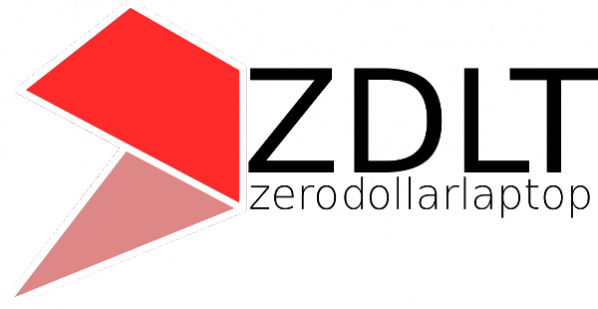
The first pilot of Zero Dollar Laptop workshops kicked off at the Bridge Resource Centre in West London in January 2010 with clients of St Mungo’s Charity for Homeless People. [3]
In our experience, a much more diverse group of people are able to enjoy and benefit from technical projects when the projects acknowledge and incorporate ethical, philosophical and aesthetic questions as part of the mix.
People who might not initially identify themselves as ‘techy’ stay engaged with complex technical learning processes by focusing on the learning that is meaningful for them and sharing it with others.
In the case of Zero Dollar Laptop workshops this can range from creating a profile image for Facebook to writing a blog post to lobby against government cuts in public services, or creating a desktop background or a new startup-sound to customise their own laptop.
The meaning and function of work is often conveyed by the construction of a context (a place, a set of tools, an aesthetic, a set of relationships) or a hack or remix of an existing context.
With participatory or collaborative artworks the context in which people engage with the work is a part of the work.
So the role of the artist today has to be to push back at existing infrastructures, claim agency and share the tools with others to reclaim, shape and hack these contexts in which culture is created.
We believe that through creative and critical engagement with practices in art and technology people become active co-creators of their cultures and societies.
And as James Wallbank notes, ‘the best artworks are those that create artists’.
Originally commissioned by Axisweb.
Introduction:
As media attention wanes, the impact of British Petroleum’s Deep Horizon, off-shore drilling disaster continues to unfold. Artists worldwide respond to this new ecological catastrophe in a group show organized by Transnational Temps, an arts collective exploring the interstices of art, ecology and technology. For Andy Deck, one of the founding members of Transnational Temps and the curator of the show, “After a decidedly unsuccessful round of climate negotiations in Copenhagen, the disaster in the Gulf of Mexico frames this exhibition of Earth Art for the 21st Century.”
Now hidden from view by BP’s media campaigns and other de facto censoring actions, the images of oil-covered birds struggling to breathe and fly, oil and dispersant-coated fish, dolphins and whales washing up dead while most sink to the ocean floor, have all but vanished. Partially filling the void are the artists showing here who are recreating topographies: mapping the course of a deadly shadow over our shores and waters; and reinterpreting the sea, its rising levels and largesse, before the vicissitudes of man and nature. Transnational Temps.
———-
Spill >> Forward by Transnational Temps describes itself as an Online Exhibition. It is a website containing images and other media on the theme of oil spills. Some of the images were shown at the MediaNoche gallery from July 30th – November 19th, 2010, with works added or removed so it isn’t just an online catalogue of a meatspace show.
The front page of the site warns that you’ll need a browser that supports HTML5 video and audio, and states that you can view it using patent-free media codecs. From a Free Software and Free Culture point of view this is excellent, your ability to view the art is not restricted by anyone else’s technological or legal machinations. This is also good from an artistic point of view. The software used to view the art can be run and maintained by anyone, making it more accessible, exhibitable and archivable. But this freedom doesn’t extend into the work itself. some of the art uses proprietary software, and none is under a free Creative Commons licence.
The image on the front page, or possibly the image exhibited at the entrance to the exhibition, is not advanced HTML5 video or canvas tag animation but an animated GIF. A Muybridge-ish series of still images of a pelican in flight flickers rapidly up and down as it descends behind an iridescent oil slick that solarizes the bottom half of the image. It’s an effective image in itself, a visually and net.art-historically literate statement that also serves to set the stage for the rest of the show.

This is clearly a politically motivated exhibition, with the theme of the exhibited art centred on a specific historical event (the Deepwater Horizon disaster). Oil spill and petrol station imagery dominates . The resulting art varies from cooly ironic asethetics (Ubermorgen), photo and video journalism (Guillermo Hermosilla Cruzat, S.Slavick & Andrew E.Johnson, Chris Dascher, Adrian Madrid), agitprop (Eric Benson, Geoffrey Michael Krawczyk, Alyce Santoro, Russ Ritell, Terri Garland, Patrick Mathieu), photography(Jessica Eik, Sabina Anton Cardenal), painting(Jessie Mann), collage(Ume Remembers), performance art(Graham Bell), interactive multimedia (Gavin Baily, Tom Corby, Jonathan Mackenzie, Chris Basmajian, Matusa Barros, Mark Cooley), augmented reality (Mark Skwarek and Joseph Hocking) and drawing (Cristine Osuna Migueles, Adrienne Klein, Jesus Andres, Sereal Designers) to video and audio art (Irad Lee, Luke Munn, Gene Gort, Tim Geers, Gratuitous Art Films, Alex George, Collette Broeders, Fred Adam and Veronica Perales, Virginia Gonzalez, Henry Gwiazda, Maria-Gracia Donoso, Jeremy Newman).
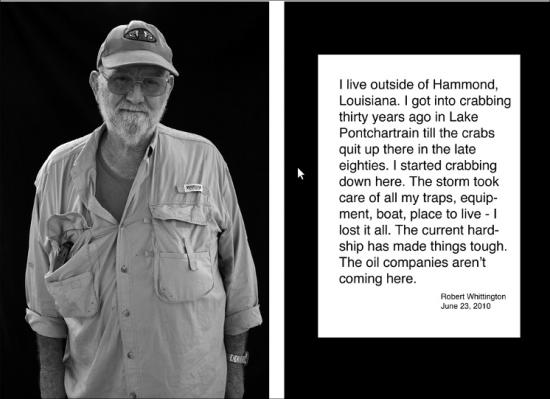
This is a lot to take in but the diversity of the work is a strength rather than a weakness, building a broad and visceral response to the Deepwater disaster. Verbal responses to the disaster from politicians seem unconvincingly nationalistic and corporate in comparison. It might seem hypocritical for artists to criticise the source of the energy that feeds us and allows us to make new media art. But we are trapped in that system, and we must be free to criticise it.
Politically inspired artworks have a difficult history, tending to be either bad politics or bad art. The art in Spill >> Forward is excellent, though. Some has a more direct message than others. Again the diversity of the exhibition plays a positive role here. The immediacy of the agitprop images doesn’t need art historical baggage to be effective, but that immediacy provides a social context for the more contemplative or abstract works. The more contemplative or abstract works don’t hammer home a simple political message but they provide an aesthetic context for the more direct images. They work very well together.
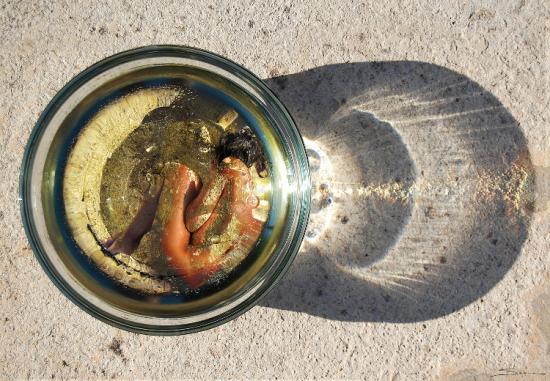
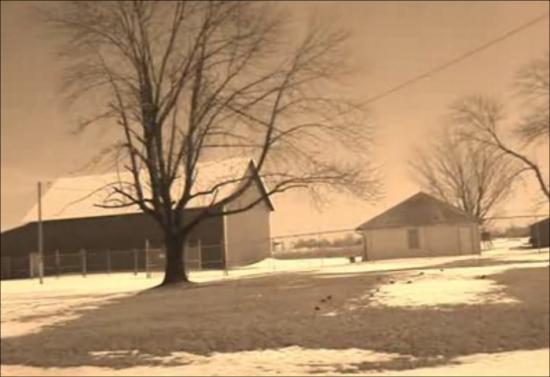
Some of the pieces in the show are clearly illustrations or recordings of work, some are electronic media that can be played on a computer, some are clearly designed to be experienced specifically through a computer system. If you removed the political theme of the show it would still be a visually (and audially) and conceptually rich cross-section of contemporary art. I was going to write “digital art” there but the show includes painting, drawing, performance, and other analogue or offline media recorded digitally for presentation online. The celestial jukebox is hungry.
If I had to pick out just a few pieces from the show I’d say that I was struck by the sounds of Luke Munn’s Deepwater Suite, by the visuals of Ubermorgen’s DEEPHORIZON, by the monochrome images and text of Terri Garland’s photography, by the video mash-up of Colette Broeders’ Breathe and by the critical camp of Graham Bell’s Radical Ecology. I think my favourite is Mark Skwarek and Joseph Hocking’s “The Leak in Your Home Town”, an iPhone app that uses the BP logo as an Augmented Reality marker to super-impose a 3D animation of the Deepwater leak over live video of your local BP petrol station. It is art that could only be made now, technologically, aesthetically and socially.
The aesthetic and conceptual competence of the artistic responses to the environmental and human crises of the oil spills in Spill >> Forward make the case for art still being a relevant and capable answer to society’s need to make sense of unfolding events. Art can still provide a much-needed space for reflection, and Spill >> Forward creates just such a space in a very contemporary way.
The text of this review is licenced under the Creative Commons BY-SA 3.0 Licence.
Alejo Duque, Kathrin Guenter, Graham Harwood, Martin Howse, Petr Kazil, Jonathan Kemp, Martin Kuentz, Tom McCarthy, Christian Nold, Nick Papadimitriou (tbc), John Rogers (tbc), Karen Russo, Gordan Savicic, Suzanne Treister, Danja Vasiliev, Ryan Jordan
From September 2008 – June 2010, Ellie Harrison undertook a Leverhulme Scholarship on the Master of Fine Art programme at Glasgow School of Art. The thesis published below forms one of the major outcomes of her research during this period. This is part one of four.
The thesis published below forms one of the major outcomes of her research during this period and builds on two earlier essays How Can We Continue Making Art? – which questions whether there is a place for art in a world which is fast approaching environmental catastrophe, and Altermoderism: The Age of Stupid – which uses Nicolas Bourriaud’s Altermodern exhibition at Tate Britain in 2009 as a paradigm for exploring the art world institution’s lack of acknowledgement and action over climate change.
Trajectories: How to Reconcile the Careerist Mentality with Our Impending Doom addresses the ethical implications of continuing to choose the career of artist in the twenty-first century. It is a manifesto of sorts, written from the personal perspective of a young UK-based artist looking to identify worthwhile reasons for continuing down this ‘self-interested’ path, given that the future we are likely to face as a result of climate change, is so different from how we dreamt our careers might pan out whilst growing up under Thatcher and New Labour. It explores how we should aim to evolve our roles as artists, in light of this, and what form a new ‘reconciled practice’ might take.
The graph below shows the projected average global temperature increase over the forthcoming century if we remain on our current trajectory of economic growth and population increase (peaking at 9 billion in 2050), but also incorporate new efficient technologies, a convergent world income and a balanced emphasis on energy sources. This is known as the Intergovernmental Panel on Climate Change’s ‘scenario A1B’ (IPCC 2001).
The graph is extracted from the official AVOID response to the United Nations Climate Change Summit in Copenhagen in December 2009 published on 26 March 2010. AVOID is a United Kingdom governmental research programme led by the Met Office with the aim of averting dangerous climate change (AVOID 2010).

Looking back, 1979 now emerges as a pivotal year in the recent history of our species. On 6 October this year the US central bank, the Federal Reserve, increased interest rates by 20 points (Fisher 2009, p.33). This act, which on paper appears of little significance, opened the gates to a whole new breed of free-market capitalism which, as a result of reduced regulation, would spread its way all over the globe. It signified the switch between Fordism and post-Fordism as the predominant economic system of production; from the ‘disciplinary societies’ of late modernism characterised by Foucault, to the ‘control societies’ which constitute our present reality (Deleuze 1990). It was the beginning of a carefully choreographed and intricately planned neoliberal project, which would serve the “restoration or reconstitution of naked class power” (Harvey 2007, p.119) to an economic elite; radically transforming the way in which all our lives would operate in its wake. Our attitudes towards work, politics, society; our relationships to one another, even the internal structuring of our own minds, would never be the same again.
It is no coincidence that it was on 4 May 1979 that Margaret Thatcher came to power in the United Kingdom; she was, of course, instrumental in overseeing this ‘revolution’. What is coincidental however is that it was also in 1979, on 11 March to be precise, that my own life began its trajectory. The rapidly changing society into which I was born would not only prove fundamental in shaping the artist I would become, but it would also prove key in determining the ‘mentality’ with which I would come to visualise my future: to plan my career.
‘Thatcher’s children’ as my generation are known, were indoctrinated to believe that the world owed us a living (Blackburn 2009). “Success”, she said, was “a mixture of having a flair for the thing that you are doing; knowing that it is not enough, that you have got to have hard work and a certain sense of purpose”. It was simply a question of making the right career choice. If we aimed for the top, we had just as much chance of getting there as anyone else. All we had to do was look out for number one. The secret, she taught us, was to have a strategy – to “plan your work for today and every day, then work your plan” (M. Thatcher n.d.); to think about what we wanted our lives to be like in the future and then to work flat-out towards that ‘goal’.
In hindsight, it now seems inevitable that my life took the course it did. Entering art school for the first time in 1997 – the year the seminal Sensation exhibition at the Royal Academy of Arts took place – we could see ‘success’ being played out before our very eyes. A group of Young British Artists (YBAs), just one generation older, were now ‘living the dream’. As 18-year-old students, we were now able to visualise the paths we wanted our own lives to take and to see exactly where we aimed to find our fortune. Like most of my art school peers, I was from an “above average social background” – raised in suburbia by a middle class family of teachers. And, as Hans Abbing notes, this added “social capital” gave me the “flair, self-assurance, and… sense of audacity” (Abbing 2002, p.95) which now seemed so essential to commodify and sell myself – to keep going, regardless of failure and rejection, with eyes firmly fixed on the prize.
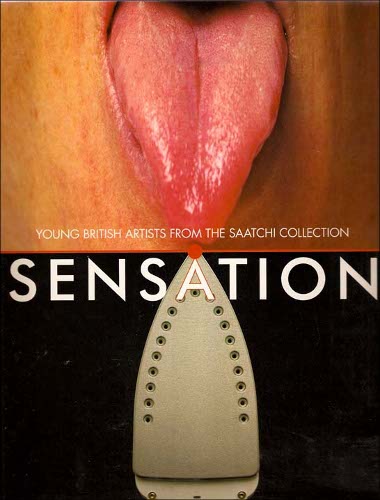
My career trajectory led me blinkered along a familiar path – a BA (Hons) degree in Fine Art from Nottingham Trent University; a Postgraduate Diploma in Fine Art from Goldsmiths College (where nearly all my YBA role models had been before me). It was as though every incremental step took me ever closer towards my ‘goal’: towards ‘success’. Finally, I won a scholarship to study on the Master of Fine Art (MFA) programme at The Glasgow School of Art; yet another prestigious art school to add to my expanding curriculum vitae. What I hadn’t banked on, however, was that on the very same day I was heading north up the M1 to Glasgow to begin this new stage in my life, the global economic order was fast collapsing around us into its own new distinct epoch, taking with it the belief systems which had been carefully constructed around it over the past 29 years.
On 15 September 2008 the investment bank Lehman Brothers Holdings Inc. filed for the biggest bankruptcy in US history with more than $600 billion of debt (Mamudi 2008). Over the course of the next year a slew of bailouts took place all over the world to prevent other banks going under. The neoliberal project had, “in every sense, been discredited” (Fisher 2009, p.78). The ideology on which, knowingly or not, my own life’s trajectory had been modelled was now on the ‘scrapheap’. And, as Mark Fisher suggests, a bleak, empty and relentless state known as ‘capitalist realism’ – in which nobody could believe, but equally nobody could stop – crept in from every corner to fill the void.
Society, it seemed, had reached a hiatus; a ground zero amid a sea of “ideological rubble” (Fisher 2009, p.78). Lots of suggestions emerged about what had gone wrong, lots of questions about where we should go next. From the privilege of my funded MFA place, I was able to enter into my own period of self-reflection about the path I had so blindly been following. Was the vision I upheld of my life in the future essentially a delusion, based on a now defunct model of ‘success’ from the past? Was I suffering from the “self-deceit” (Abbing 2002, p.114) Hans Abbing diagnoses to be prevalent in young artists, coupled with the complete “disavowal” (Fisher 2009, p.13) of the negative side-effects of my complicity in the system of capital? With a sudden and overwhelming urgency it felt essential that I question how I could begin to reconcile my career choice and the entrepreneurial methodology (Abbing 2002, p.96) with which I was pursuing it, with the harsh realities that both science, and now science fiction, are predicting the future actually holds in store…
Films such as The Road (Hillcoat 2009) offer us a very different picture of the forthcoming century. In this barely hospitable, yet eerily recognisable version of our present world there is no Turner Prize, no Frieze magazine to be reviewed in; no canon to become part of. In fact, there is no scope for the non-essential; no room for aesthetics; no space for art at all. Whereas it now appears clear that the trajectory I had planned for my life since art school is constituted by fantasy, the trajectory which befalls the lives of the protagonists of this particular post-apocalyptic vision is in part based on what the current overwhelming scientific evidence points towards.
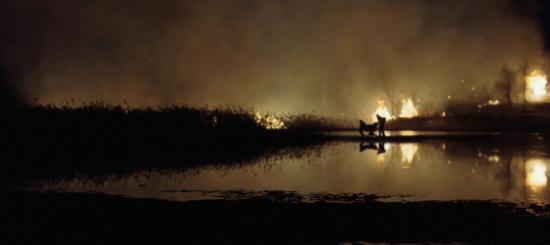
The United Nations Climate Change Summit which took place in Copenhagen in December 2009 offered what many scientists and campaigners referred to as our ‘last chance’ of averting global catastrophe within the coming century. Prior to the talks the 10:10 Campaign’s ‘call to arms’ statement outlined what sort of trans-governmental worldwide commitment it would be necessary to achieve:
“The best deal currently on the table is that from the EU, which calls for a 30% reduction [in greenhouse gas emissions] by 2020 (compared to 1990 levels). If this deal were to be accepted (which is a very big if, given that Japan argues for 8%, Australia for 5% and America for between 0%-6%) and if the emission cuts were then carried out (which is an even bigger if), this would give us about a 50/50 chance of not hitting the dreaded two degrees. Two degrees is where we trigger runaway climate change [emphasis added]: two leads to three, three to four, four to five, five to six… by which time it’s about over for life on Earth.” (Armstrong 2009b)
Given that Copenhagen was by all accounts a complete failure and that, in fact, not even the least significant of the ‘deals’ presented was agreed upon and signed off, the balance now appears to be swaying decisively towards the latter of these two potential trajectories. We find ourselves “trapped inside a runaway narrative, headed for the worst kind of encounter with reality” (Kingsnorth & Hine 2009, p.11). Unless it is fully acknowledged and hastily acted upon in consensus across the globe, climate change “threatens to render all human projects irrelevant” (Kingsnorth & Hine 2009, p.6). It appears that it is not just the future of our careers we should be worried about but now, more likely, the fundamental ability of our species to survive on the planet.
The concern of this essay is to uncover exactly how we could have arrived at a situation where these two distinct visions of our future can so wildly diverge – to explore the factors which have allowed our careerism to persist, in light of advice to the contrary. The aim is to illuminate the significance of this ‘now or never’ moment in the history of our species as an opportunity for radical change, and to develop a ‘plan of action’ and a ‘new moral code’ which may help us, as artists, determine what role we can and should play in the reality of the twenty-first century.
To read Part 2 of this article visit this link: http://www.furtherfield.org/articles/trajectories-how-reconcile-careerist-mentality-our-impending-doom-part-24
——-
References:
Armstrong, F., 2009b. What is 10:10? 10:10 Campaign website. Available at: www.1010uk.org/1010/what_is_1010/arms [Accessed April 10, 2010].
Abbing, H., 2002. Why Are Artists Poor?: The Exceptional Economy of the Arts, Amsterdam: Amsterdam University Press.
AVOID, 2010. Will the Copenhagen Accord avoid more than 2°C of global warming? AVOID website. Available at: ensembles-eu.metoffice.com/avoid [Accessed May 3, 2010].
Blackburn, S., 2009. Do we need a new morality for the 21st century? The Guardian Culture Podcast. Available at: www.guardian.co.uk/culture/audio/2009/nov/02/cambridge-festival-of-ideas.
Deleuze, G., 1990. Society of Control. L’Autre Journal, (1). Available at: www.nadir.org/nadir/archiv/netzkritik/societyofcontrol.html.
Fisher, M., 2009. Capitalist Realism: Is There No Alternative?, Ropley, Hampshire: 0 Books.
Harvey, D., 2007. A Brief History of Neoliberalism, Oxford: Oxford University Press.
Hillcoat, J., 2009. The Road, Dimension Films.
IPCC, 2001. Special Report on Emissions Scenarios. GRID-Arendal website. Available at: www.grida.no/publications/other/ipcc%5Fsr/?src=/climate/ipcc/emission [Accessed May 3, 2010].
Kingsnorth, P. & Hine, D., 2009. Uncivilisation: The Dark Mountain Manifesto. Available at: www.dark-mountain.net/about-2/the-manifesto.
Mamudi, S., 2008. Lehman folds with record $613 billion debt. MarketWatch website. Available at: www.marketwatch.com/story/lehman-folds-with-record-613-billion-debt?siteid=rss [Accessed April 25, 2010].
Thatcher, M., Margaret Thatcher Quotes. About.com website. Available at: womenshistory.about.com/od/quotes/a/m_thatcher.htm [Accessed May 2, 2010].
To read Part 1 of this article visit this link:
http://www.furtherfield.org/articles/trajectories-how-reconcile-careerist-mentality-our-impending-doom-part-24
What is curious about the neoliberal project that kick-started in the year of my birth, is that, from the politics of the preceding decade, it appeared history could have taken a very different course. 1972 marked the publication of The Limits to Growth – a study commissioned by the humanitarian think-tank the Club of Rome to estimate the planet’s reserves of natural resources, “including topsoil, fresh water, minerals, forests and oceans” – questioning for the first time what might be the consequences of “another 100 years of exponential growth” (M. Fowkes & R. Fowkes 2009, p.670). The findings of the study were so significant that they are cited by Maja and Reuben Fowkes as a revelation for the future of humanity on a par with Copernicus’s discovery of Heliocentrism: putting our lives on planet earth sharply into perspective. Essentially the report gave us all the information we needed to know: that the way of life modernity had accustomed us to, was not sustainable. The whole system on which our modern liberal democracies were structured was supported by a myth of continual and infinite progress (Kingsnorth & Hine 2009, p.3) and a universal belief that the future will always be better than the past – that it is always within our capable hands to control our destinies.
Rather than take heed of this advice and look for alternative ways of structuring our societies, what actually began towards the end of the seventies, continuing right up to the present day, was the opposite: a complete and utter acceleration of our production and consumption. Post- The Limits to Growth our lives were allowed to continue in a fashion now no longer based on scientific facts, but on fantasy:
“What this… illustrates is the fantasy structure on which capitalist realism depends: a presupposition that resources are infinite, that the earth itself is merely a husk which capital can at a certain point slough off like a used skin, and that any problem can be solved by the market… The relationship between capitalism an eco-disaster is neither coincidental nor accidental: capital’s ‘need of a constantly expanding market’, its ‘growth fetish’, mean that capitalism is by its very nature opposed to any notion of sustainability.” (Fisher 2009, pp.18-9)
We were allowed to continue because we repressed this truth. Our ‘denial’ was constituted by what Freud described as our inability to hear the things which did not fit easily with the way we envisaged ourselves in the world (Kingsnorth & Hine 2009, p.9). We simply blocked out any hint of a hitch or obstacle to our career trajectories and carried-on regardless. Neoliberalism achieved this ‘state of mind’ purposefully – by pacifying us with the things we thought we wanted, that would make us happy, whilst removing the possibility for resistance. The “drive towards atomistic individualisation” (Fisher 2009, p.37) captured in Margaret Thatcher’s dictum “There is no such thing as Society. There are individual men and women” (M. Thatcher n.d.), plunged us further into our internal solipsistic worlds; from where it became almost impossible to fully empathise with others, to acknowledge the wider consequences of our actions, to see beyond the fantasy – to believe that ‘an alternative’ might be possible. We lost our political ‘agency’ as our liberal democracies became governments-as-administration (Zizek 2009b); appealing to our burgeoning “individual ideals” (Strawson 2008) – to “short-termism” (Brown 2009) – rather than the bigger picture and a realistic long-term plan.
In his recent book First as Tragedy, Then as Farce, Slavoj Zizek describes the strategies the neoliberal policy makers employed to continue to maintain this state of denial well into the twenty-first century, explaining how the negative side effects of the bursting of the dotcom bubble in 2000 had been countered by a push on cheap loans to stimulate the housing market. This had simply allowed the US to “continue dreaming” (Zizek 2009a, p.20) for that little bit longer; essentially just prolonging the global crisis until a later date: until now.
“It’s useless to wait – for a breakthrough, for the revolution, the nuclear apocalypse or a social movement. To go on waiting is madness. The catastrophe is not coming, it is here. We are already situated within the collapse of civilisation.” (The Invisible Committee 2009, p.96)
The significance of this point in history cannot be underestimated. The hiatus caused by this latest epic crisis of capital should have given all of us opportunity for self-reflection. The connections between capitalism and environmental catastrophe have once again been starkly illuminated and so too has our own complicity in, and responsibility for, both. As the many climate scientists and campaigners have been telling us, we now only have one decade left – until 2020 – to stabilise and begin to reduce our rapidly increasing greenhouse gas emissions or we will be unable to avoid hitting the “dreaded two degrees” (Armstrong 2009b) – the tipping point at which we trigger runaway climate change and a rapid irreversible and uncontrollable descent into a new world of which the visions of The Road are not too much of an exaggeration.
Even mainstream politicians hungry for votes are forced to admit that “the age of irresponsibility is giving way to the age of austerity” (Cameron 2009). It does seem “useless to wait” (The Invisible Committee 2009, p.96). Now provides the opportunity to radically rethink the way we live, not just in practical terms, but in the way our minds perceive of ourselves in the future; of what we are working ‘towards’. We need to reverse our very ontological foundations so that we become capable of comprehending the opposite of progress – of approaching life in a world where deflation becomes the norm and where rationing is “inevitable” (Fisher 2009, p.80).
As artists – the producers of the non-essential – this rethink seems all the more vital and all the more urgent. It is now our ‘responsibility’ to redefine our roles within this new world, within the “collapse of civilisation” (The Invisible Committee 2009, p.96). As we approach the inevitable challenges of the forthcoming century we can no longer be immune to ethics – we must begin to question what practical function our work can have. And, if we decide that we can still persist in our roles as artists, then we must begin to generate new ways of finding “intrinsic motivation” when our traditional motivational structures of striving towards ‘goals’ such as “recognition and fame” (Abbing 2002, p.82); of creating a ‘legacy’ for ourselves in the future, no longer seem viable.

It is typical in periods of crisis (and opportunity) such as this to look to the past for guidance. Retrospective critique (as used to ‘set the scene’ for this essay) helps us to understand the causes of our current predicament in terms of a greater historical trajectory, to help us make sense of our own lives biographically. The real challenge, however, is in developing the suggestions, ideas and solutions that are essential to help us move on. The proceeding sections of this essay turn to two manifestos from 2009 which attempt just this: Ecoaesthetics: A Manifesto for the Twenty-First Century by Rasheed Araeen and Uncivilisation: The Dark Mountain Manifesto. The intention is to draw together their recurring ideas in order to formulate a ‘plan of action’ which may constitute our ‘new moral code’, and then to examine how some of these ideas are already being put into practice, not just by some artists, but by other more radical elements of society.
In September 2009, the international journal of “critical perspectives on contemporary art and culture” Third Text dedicated an entire issue to contemplating a vision of the future of art, in which Araeen’s manifesto is published. In the preface, Araeen and his co-editor Richard Appignanesi give their own diagnosis of the predicament of artists “now as we face a legacy of failures in modern history that endangers the future prospects of humanity” (Araeen & Appignanesi 2009, p.500). Their suggestion is that we have reached a cynical and solipsistic impasse which it is essential to overcome:
“… the very concept of art will have to liberate itself from the two historical limits of containment and legitimisation. One is containment in the artist’s own narcissist ego; the other is art’s dependence for its legitimisation as art on the institutions that facilitate and promote art only as reified commodities placed in museum and marketplace showcases.” (Araeen & Appignanesi 2009, p.500)
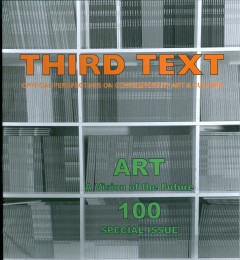
Ego and individualism have always gone hand-in-hand with the relatively autonomous role the artist has historically enjoyed within society, however, it appears that these characteristics have only been exacerbated in recent years. Neoliberal ideology has led to a “convergence of artistic and entrepreneurial values” (J. Thatcher 2009, p.5) – flexible, creative and autonomous modes of operating have been co-opted by the business world, just as ‘the careerist mentality’ has been inherited by artists. Recent mainstream television programmes such as School of Saatchi (Priddle 2009) and Goldsmiths: But is it Art? (Kerr 2010), which pit artists’ egos and entrepreneurial skills against one another, show the extent to which these attitudes have become the norm.
The super-competitive environment of the ‘atomised art world’ engenders a survival instinct in artists which causes us, knowingly or not, to make our sole objective the expansion of our curricula vitae. The emphasis is on the development of a “narrative” – on forming a “brand identity” (Prince 2010, p.10), because this presents itself as the most efficient means to the desired ends of “recognition and fame” (Abbing 2002, p.82). Trapped in a perpetual attempt to impress art world institutions, artists inevitably end up feeding them with the art that they think they want rather than stopping to question exactly what they are producing and why.
In a pre-neoliberal world, choosing the role of artist was seen as an alternative to the mainstream: a point of resistance, a political statement even (Walker 2002) – art offered a potential strategy of “opposition to capitalism” (J. Thatcher 2009, p.6). Now as a small component part in this means / end cycle – art – simply acts an instrument to serve the “career ambitions of self-centred artists” – its “significant critical and social function” (Araeen 2009, p.680) disabled in the process. But, at this particular point in our history, art’s power in “subverting the dominant hegemony” (Mouffe 2007) – in creating an ‘alternative knowledge’ – may be its only redeemable function.
Araeen’s call for art to be liberated from “containment and legitimisation” (Araeen & Appignanesi 2009, p.500) foresees the unprecedented power he believes our ideas could have if completely detached from capitalism:
“It is in fact artistic imagination, not art objects, which, once freed from the self-destructive narcissist ego, can enter this life and not only offer it salvation but put it on the path to a better future.” (Araeen 2009, p.683)
He goes as far as to suggest that artists should “abandon their studios” and “stop making objects” (Araeen 2009, p.684). He urges us to reconfigure our roles to such an extent that our creative skills are put to use in conceptualising real-life practical projects, such as creating solar-powered desalination plants, which simultaneously address the two imminent global challenges of energy and freshwater shortages. Art should renounce its “freedom from function which constitutes its autonomy” (Prince 2009, p.7), leave the world of the ‘non-essential’ and begin to offer us with ‘practical solutions’ to real life problems.
Whereas Araeen’s manifesto (inline with the desperate pleas of environmental campaigns such as 10:10) gives a sense that something can be done to avert ‘our impending doom’. There is, however, another concurrent school of thought which encourages us to embrace our fate. Uncivilisation: The Dark Mountain Manifesto was published in 2009 by writers Paul Kingsnorth and Dougald Hine, as a vision of the future of literature in the new form of “uncivilised art” (Kingsnorth & Hine 2009, p.13). It takes the pessimism of beliefs such as those of James Lovelock: that humans are too stupid to prevent climate change (Hickman 2010, p.12) and challenges us to invert these to become a positive creative force:
“We live in a time of social, economic and ecological unravelling. All around us are signs that our whole way of living is already passing into history. We will face this reality honestly and learn how to live with it.” (Kingsnorth & Hine 2009, p.19)
The key is in developing a sense of objectivity about the systems in which we are enmeshed. We are invited to “stand outside the human bubble”, to “tug our attention away from ourselves and to turn it outwards; to uncentre our minds”: essentially to put “civilisation – and us – into perspective” (Kingsnorth & Hine 2009, p.13).
Once we are able to shift our attitude from that of hubris to that of humility, it becomes easier to accept that resources are indeed finite; civilisations do collapse and that species, including our own, become extinct. With this finitude as a certainty, the petty squabbling of the art world and the insignificance of the ‘goals’ we have been striving towards become evident. We can be liberated from our career plans; from the careful crafting of our own personal legacies and can refocus our attentions on the immediacy of the present (Bey 1994), for it is perhaps here where we should learn to find meaning and happiness.
To read Part 3 of this article visit this link: http://www.furtherfield.org/articles/trajectories-how-reconcile-careerist-mentality-our-impending-doom-part-34
————
References:
Abbing, H., 2002. Why Are Artists Poor?: The Exceptional Economy of the Arts, Amsterdam: Amsterdam University Press.
Araeen, R., 2009. Ecoaesthetics: A Manifesto for the Twenty-First Century. Third Text, 23(5), 679-84.
Araeen, R. & Appignanesi, R., 2009. Art: A Vision of the Future. Third Text, 23(5), 499-502.
Armstrong, F., 2009a. Franny Armstrong: If you’re not fighting climate change or improving the world, then you’re wasting your life. The Guardian, 8.
Armstrong, F., 2009b. What is 10:10? 10:10 Campaign website. Available at: www.1010uk.org/1010/what_is_1010/arms [Accessed April 10, 2010].
Bey, H., 1994. Immediatism, Oakland, California: AK Press.
Brown, W., 2009. What will be the legacy of recession? The Guardian Culture Podcast. Available at: www.guardian.co.uk/culture/audio/2009/oct/26/culture-cambridge-festival-ideas.
Cameron, D., 2009. The Age of Austerity. The Conservative Party website. Available at: www.conservatives.com/News/Speeches/2009/04/The_age_of_austerity_speech_to_the_
2009_Spring_Forum.aspx [Accessed April 25, 2010].
Fisher, M., 2009. Capitalist Realism: Is There No Alternative?, Ropley, Hampshire: 0 Books.
Fowkes, M. & Fowkes, R., 2009. Planetary Forecast: The Roots of Sustainability in the Radical Art of the 1970s. Third Text, 23(5), 669-674.
Kerr, A., 2010. Goldsmiths: But is it Art?, BBC 4.
Kingsnorth, P. & Hine, D., 2009. Uncivilisation: The Dark Mountain Manifesto. Available at: www.dark-mountain.net/about-2/the-manifesto.
Mouffe, C., 2007. Artistic Activism and Agonistic Spaces. Art & Research, 1(2). Available at: www.artandresearch.org.uk/v1n2/mouffe.html [Accessed April 25, 2010].
Priddle, A., 2009. School of Saatchi, BBC 2.
Prince, M., 2009. Art & Politics. Art Monthly, (330), 5-8.
Prince, M., 2010. Remakes. Art Monthly, (335), 9-12.
Strawson, P.F., 2008. Social Morality and Individual Ideal. In Freedom and Resentment and Other Essays. London / New York: Routledge, pp. 29-49.
Thatcher, J., 2009. Crunch Time. Art Monthly, (332), 5-8.
Thatcher, M., Margaret Thatcher Quotes. About.com website. Available at: womenshistory.about.com/od/quotes/a/m_thatcher.htm [Accessed May 2, 2010].
The Invisible Committee, 2009. The Coming Insurrection, Los Angeles / Cambridge, Mass.: Semiotext(e).
Walker, J., 2002. Left Shift: Radical Art in 1970s Britain, London / New York: I.B. Tauris.
Zizek, S., 2009a. First As Tragedy, Then As Farce, London: Verso.
Zizek, S., 2009b. In Defense of Lost Causes, London: Verso.
To read Part 1 of this article visit this link:
http://www.furtherfield.org/articles/trajectories-how-reconcile-careerist-mentality-our-impending-doom-part-14
To read Part 2 of this article visit this link: http://www.furtherfield.org/articles/trajectories-how-reconcile-careerist-mentality-our-impending-doom-part-24
Drawing together the diagnoses which recur throughout the literature of the moment, such as Capitalist Realism: Is There No Alternative? (Fisher 2009), First as Tragedy, Then as Farce (Zizek 2009a) and The Coming Insurrection (The Invisible Committee 2009) alongside the key suggestions, ideas and solutions from these two manifestos, our ‘plan of action’ begins to materialise.
In the spirit of Pascal’s famous ‘wager’ (Hajek 2008) the plan aims to cover all bases: our active and / or passive responses to the situation. Encouraging the belief that we might still be able to use our roles as artists to incite the radical change to our societal structure (in the art world and globally) needed to avert climate catastrophe, whilst simultaneously developing philosophies for coping with our lives – finding meaning and happiness – should our active response fail.
The seven points below offer a set of guidelines for rethinking our lives, which should act as the starting points for redefining our roles as artists and thinking about how it might be possible to reconcile ‘the careerist mentality’ into which we have been inculcated with the possibility of ‘our impending doom’:
1. stand back and view the world objectively
The main focus of Uncivilisation and our greatest existential priority is to enable ourselves to grasp perspective, not only of the relative insignificance of our individual career plans within the wider world, but more pertinently of the fragility of our entire species within the greater timescales of the universe. Once this mind shift is achieved it becomes easier to distil what is actually important in our lives – happiness and our two unending desires for survival and meaning (Kingsnorth & Hine 2009, p.2). Only then will the remaining six points become easier to implement.
2. offer an external critique of the system
In our new ‘state of mind’ it becomes easier to see the systems in which we have been blindly functioning. From beyond the grasp of the dominant hegemony we can offer a vital ‘external critique’. As Chantal Mouffe suggests, our duty as artists then becomes to challenge the “given symbolic order” and the “existing consensus” (Mouffe 2007) – to revivify the belief that ‘an alternative’ is possible.
3. develop ways or working outside institutions
Our criticisms should extend to the hegemony of the art world, severing our dependence on “legitimisation” (Araeen & Appignanesi 2009, p.500). We must have the courage of conviction in our ideas to find ways of operating outside of art world institutions, especially the marketplace. We require what Mark Fisher describes as a “positive disengagement” – a protest of sorts – which should take the form of “collective activity” (Fisher 2006) to help us break out of our entrepreneurial solitude…
4. escape solipsism; work with and not against peers
As individual artists, working alone, we typify the global trend towards what Adam Curtis calls the “empire of the self” (Curtis 2002), in which anxiety and paranoia are rife. For Araeen, it is this “extreme self-centred individualism of art today” which is “a disturbing symptom of its detachment from our collective humanity” (Araeen 2009, p.679). And so, we must prioritise “collective activity” (Fisher 2006), learning to work in co-operation rather than competition with our friends. Peer support will relieve our paranoia and allow our capacities for empathy to be resuscitated.
5. reject ego and embrace anonymity
Collaboration will enable us to surrender our egos to the collective force; liberating our ideas from their “containment” (Araeen & Appignanesi 2009, p.500). We should “flee visibility” and embrace the new powerful, but faceless forms of resistance being pioneered by The Invisible Committee – encouraging us to turn our “anonymity… to our advantage” (The Invisible Committee 2009, pp.112-3).
6. create free ideas, not objects for sale
Our role as artists should be to focus on the creation of ideas, not the production of objects. The rejection of commodity is an important part of our ‘disengagement’ from the marketplace. Our ideas should not remain private property and should be gifted to the ‘creative commons’ for the ‘public good’ (Blackburn 2009). As Hakim Bey suggests in his book Immediatism, “The more imagination is liberated and shared, the more useful the medium” (Bey 1994, p.36).
7. abandon the trajectory; find motivation in immediacy, not legacy
We must cease to think of our art as a means to an end; a way of getting somewhere – into a book, a magazine, an exhibition etc, as it is pointless to base our motivations on a future which will, very likely, not be able to function as the present does. We should abandon the very notion of a career trajectory and learn to focus our attentions on the reality of now. Without an overpowering emphasis on the future our anxieties will begin to dissolve and we will be able to unearth the absolute state of happiness that exists in the “continuous present” (Crisp 1996, p.54). We must remain alert and not complacent, notice and appreciate the things which are actually good and, as Kurt Vonnegut suggests, continually remind ourselves “if this isn’t nice, I don’t know what is” (Vonnegut 2003).
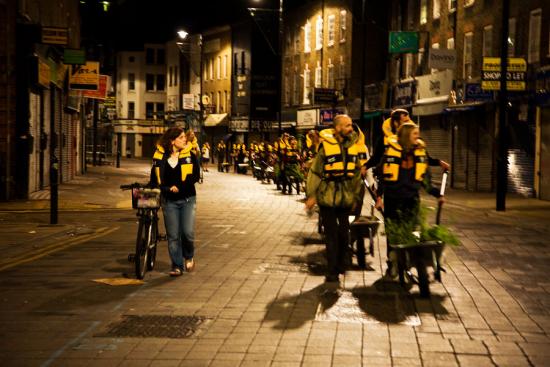
The ‘plan of action’ forms the basis of a new ideology, which acts as a counterpoint to neoliberalism – advocating our extrication from the system of capital that is the “ultimate cause” (Fisher 2009, p.70) of our environmental crisis. Heavy on words such as ‘abandon’, ‘reject’, ‘stand back’ and ‘disengage’ it calls us to make radical changes. It demands that we overcome our “path dependency” (Abbing 2002, p.96) by shifting our goals away from the fantasy status of the ‘successful’ artist. It all makes our new role seem far less glamorous than our dreams may have envisaged – insisting that we renounce our vanity, abandon our egos, move towards collectivism and anonymity; in short, commit “career suicide” (Sharp 2010, p.52).
But would it really be so beneficial to scrap everything and start again – to admit that our lives up until this point had been “lost causes” (Zizek 2009b)? The emphasis of this essay is on the possibility of reconciliation. Therefore, it aims to explore what positive characteristics of ‘the careerist mentality’ that has driven us to take this individualistic path, we might be able to “salvage” (Williams 2009) and, in doing so, reconfigure to become a positive force that can help us put the plan into action all the more effectively: to take the necessary risks and make a stand for the ‘right’ ethical choice.
Counter to Kant’s belief that the fields of ethical decision making (part of ‘practical reason’) and aesthetic decision making (part of ‘judgement’) be kept separate (Guyer 2004), it appears that the gravity of the situation we face means that these two spheres must begin to coincide. Indeed, in his final book Chaosmosis: An Ethico Aesthetic Paradigm, Felix Guattari argues for the culminating phase of art to be one in which it has an integral relationship with ethics (Guattari 2006). And so, the ethical implications of the ‘plan of action’ become difficult to ignore. Its focus on ‘tugging our attention away’ from our obsession with our own lives to reconnect with our “collective humanity” (Araeen 2009, p.679) is clearly a moral proposition, soliciting a shift from prudent self-interest towards more altruistic behaviour.
The conflict that emerges between the self-interest of ‘the careerist mentality’ and the apparently selfless altruism called for by several points of the ‘plan of action’ has long been the concern of moral philosophy. The recurring question being whether they can ever coexist or be reconciled. In her essay Altruism Versus Self-Interest: Sometimes a False Dichotomy, Neera Kapur Badhwar argues that in certain cases, where individuals display particular characteristics, reconciliation of these traditional polarities is possible (Badhwar 1993).
Badhwar’s essay is based on the analysis of extreme instances of altruism (in this case the behaviour of those who rescued / harboured Jews from the Nazis in the Second World War). What is interesting, and indeed relevant, is the way in which she demonstrates how these definitive acts of altruism are able to coexist with self-interested motivations. Her argument is based on an extension of the categories of self-interested motivation from “feeling virtuous, becoming famous, gaining wealth” (Badhwar 1993, p.101) – equate these to the artist’s extrinsic motivations “money, recognition, fame” (Abbing 2002, p.82) – to include “integrity and self-affirmation” (Badhwar 1993, p.101) – read the artist’s intrinsic motivations of “inner gratification or private satisfaction” (Abbing 2002, p.82). Even though she acknowledges that these altruistic acts were carried out with an “awareness of the risk, in the absence of expectations of material, social, or psychological rewards [and with] the spontaneity of their choice to help” (Badhwar 1993, p.96), she demonstrates that it was precisely because these individuals took the risk that they were able to satisfy the:
“fundamental human interest, the interest in shaping the world in light of one’s own values and affirming one’s identity.” (Badhwar 1993, p.107)
Furthermore, she unearths another peculiarity at the heart of the dichotomy of individualism / collectivism (Triandis 1995) which also becomes key to the possibility of reconciliation. The individuals that she studied were compelled to carry out these altruistic acts because they were able to perceive of themselves as part of the “collective humanity” (which Araeen demands we reconnect with) and so had a more developed capacity for empathy. But, moreover, that it was something inherent in their individualism that gave them the “confidence in the value of their mission, and their own capacities for carrying it out” (Badhwar 1993, p.100): to stand away from the crowd and to stand up for what they believed to be right.
Following Badhwar’s argument, it becomes possible to identify the first of the characteristics of ‘the careerist mentality’ we should aim to salvage. For it is our “flair, self-assurance, and… sense of audacity” (Abbing 2002, p.95) which we shall have to depend on in order to take the risk necessary to make a stand against the mainstream.
What might it look like if we took the risk? What might we end up with if we followed the points in the ‘plan of action’ to the word? It is possible that rather than resulting in a radical new type of art practice, what would actually take place is a shift away from art and into the field of activism.
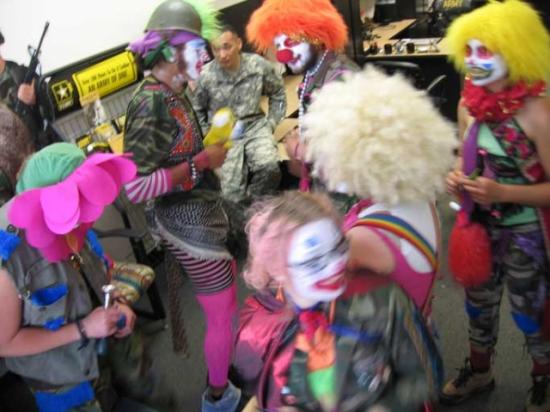
The Clandestine Insurgent Rebel Clown Army (CIRCA) was formed in 2003, to mark the official state visit of George W Bush to London at the onset of the Iraq war. It aimed to bring together “the ancient practice of clowning and the more recent practice of nonviolent direct action” (CIRCA 2003) – staging a series of strategic protests as part of an ongoing offensive against the evils of ‘war’ and ‘capitalism’. Before the protests at the G8 Summit at Gleneagles in 2005, the Rebel Clown Army embarked on a national recruitment tour of the United Kingdom. Anyone and everyone was invited to join, the only stipulation being that Basic Rebel Clown Training (BRCT) was first undertaken.
Much like the ‘plan of action’, the BRCT process focuses on the individual’s emancipation – on “transformation” and “personal liberation” from the dominant hegemony (CIRCA 2003). This internal reprogramming enables clownbatants, as they are known, to shut off their previous assumptions about hierarchical power structures and to step back and see the world with fresh eyes. From this new perspective the absurdity of a situation in which a line of protesters face-up against a line of police, becomes apparent. Beyond the signifiers of each others’ uniforms, Ranciere’s notion of the omnipresence of equality becomes evident (Ranciere 2007) and play and humour then perhaps do seem the natural human responses. Against the forward planning tactics of a traditional army (and indeed the career-minded artist) CIRCA’s emphasis is on spontaneity: “because the key to insurgency is brilliant improvisation, not perfect blueprints” (CIRCA 2003).
In a uniform which combines camo and greasepaint, clownbatants (as Point 5. suggests) ‘reject ego and embrace anonymity’ and so their inhibitions and embarrassment become irrelevant. So much more becomes possible without the worry of how they are perceived, of how others will judge them. Their individual subjectivities come together as a collective force of resistance. Their creativity exists in a space beyond the system of capital and they are utilising it to actively fight back.
The founders of the Rebel Clown Army were so aware of the importance of creativity in the process of resistance and of the potential for an evolution between art and activism, that they later set up the Laboratory of Insurrectionary Imagination (Lab of ii) as “a space to bring artists and activists together” (Harvie et al. 2005, p.249). The idea was to enable situations where they could work together and transfer skills – cultivating confidence in their “creative capacity as [a] fundamental tool for social change” (Lab of ii 2005). Functioning across the public realm, art world institutions and sites of traditional protest, the Lab of ii manages to successfully infiltrate and subvert different aspects of the hegemony. Most recently at Tate Modern in London, where under the banner of Disobedience Makes History – a two-day workshop on “art-activism” – they deliberately disobeyed the curator’s orders, encouraging participants to aim public attacks relating to the climate crises directly at the museum’s sponsors BP (Jordan 2010, p.35).
To read Part 4 of this article visit this link: http://www.furtherfield.org/articles/trajectories-how-reconcile-careerist-mentality-our-impending-doom-part-44
————
References:
Araeen, R., 2009. Ecoaesthetics: A Manifesto for the Twenty-First Century. Third Text, 23(5), 679-84.
Araeen, R. & Appignanesi, R., 2009. Art: A Vision of the Future. Third Text, 23(5), 499-502.
Badhwar, N.K., 1993. Altruism Versus Self-Interest: Sometimes a False Dichotomy. In Altruism. Cambridge: Cambridge University Press, pp. 90-117.
Bey, H., 1994. Immediatism, Oakland, California: AK Press.
Blackburn, S., 2009. Do we need a new morality for the 21st century? The Guardian Culture Podcast. Available at: www.guardian.co.uk/culture/audio/2009/nov/02/cambridge-festival-of-ideas.
CIRCA, 2003. About the Army. Clandestine Insurgent Rebel Clown Army website. Available at: www.clownarmy.org/about/about.html [Accessed April 25, 2010].
Curtis, A., 2002. The Century of the Self, BBC 4.
Crisp, Q., 1996. The Naked Civil Servant, London: Flamingo.
Fisher, M., 2006. Reflexive Impotence. k-punk blog. Available at: k-punk.abstractdynamics.org/archives/007656.html [Accessed April 25, 2010].
Fisher, M., 2009. Capitalist Realism: Is There No Alternative?, Ropley, Hampshire: 0 Books.
Guattari, F., 2006. Chaosmosis: An Ethico Aesthetic Paradigm. In Participation. London / Cambridge, Mass.: Whitechapel / MIT Press.
Guyer, P., 2004. Immanuel Kant. In E. Craig, ed. Routledge Encyclopedia of Philosophy. London: Routledge.
Hajek, A., 2008. Pascal’s Wager. The Stanford Encyclopedia of Philosophy. Available at: plato.stanford.edu/archives/fall2008/entries/pascal-wager [Accessed May 3, 2010].
Harvie, D. et al. eds., 2005. Shut Them Down!, Leeds / New York: Dissent! / Autonomedia.
Jordan, J., 2010. On refusing to pretend to do politics in a museum. Art Monthly, (334), 35.
Kingsnorth, P. & Hine, D., 2009. Uncivilisation: The Dark Mountain Manifesto. Available at: www.dark-mountain.net/about-2/the-manifesto.
Lab of ii, 2005. About Us. The Laboratory of Insurrectionary Imagination website. Available at: www.labofii.net/about [Accessed April 25, 2010].
Mouffe, C., 2007. Artistic Activism and Agonistic Spaces. Art & Research, 1(2). Available at: www.artandresearch.org.uk/v1n2/mouffe.html [Accessed April 25, 2010].
Ranciere, J., 2007. Hatred of Democracy, London: Verso.
Sharp, C., 2010. Career Suicide. Art Review, (40), 52-4.
The Invisible Committee, 2009. The Coming Insurrection, Los Angeles / Cambridge, Mass.: Semiotext(e).
Triandis, H., 1995. Individualism and Collectivism, Boulder, Colorado: Westview Press.
Vonnegut, K., 2003. Knowing What’s Nice. In These Times. Available at: www.inthesetimes.com/article/knowing_whats_nice [Accessed April 25, 2010].
Williams, E.C., 2009. Putting the punk back in salvage (where it was not to begin with). Socialism and/or Barbarism blog. Available at: socialismandorbarbarism.blogspot.com/2009/08/putting-punk-back-in-salvage-where-it.html [Accessed May 4, 2010].
Zizek, S., 2009a. First As Tragedy, Then As Farce, London: Verso.
Zizek, S., 2009b. In Defense of Lost Causes, London: Verso.
To read Part 1 of this article visit this link:
http://www.furtherfield.org/articles/trajectories-how-reconcile-careerist-mentality-our-impending-doom-part-14
To read Part 2 of this article visit this link: http://www.furtherfield.org/articles/trajectories-how-reconcile-careerist-mentality-our-impending-doom-part-24
To read Part 3 of this article visit this link: http://www.furtherfield.org/articles/trajectories-how-reconcile-careerist-mentality-our-impending-doom-part-34
Returning to Badhwar’s essay, it is important to note the impulsive and/or compulsive nature of the acts of altruism that she studied – “the spontaneity of their choice to help” (Badhwar 1993, p.96). She observes that:
“Those who acted spontaneously, then, acted with a sense that they had no alternative but to help, and that, under the circumstances, helping was nothing special… [Their actions were] a spontaneous manifestation of “deep-seated dispositions which form one’s central identity” or character.” (Badhwar 1993, p.97)
Of course, impulsion and / or compulsion are not the sorts of qualities which can be taught or learnt. As is suggested, you really have to believe in what you are doing in order to act instinctively – in a way which is not premeditated or over-deterministic. In this sense you cannot simply follow a ‘plan’ to be altruistic as this is in its essence self-defeating. It is, however, possible to develop one’s “character” or “identity”, so that we do begin to notice when things are wrong or unjust and we really do feel compelled to act to change them. This is done through periods of self-reflection but also, more importantly, by acquiring knowledge.
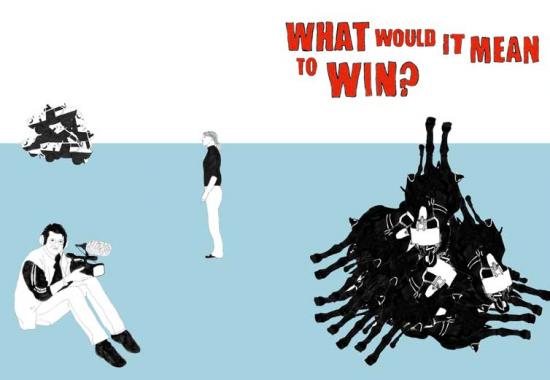
Oliver Ressler uses his research-based practice as a way of not only acquiring knowledge for himself, but of disseminating it to others – via video, installation and public realm contexts. His 2008 film What Would It Mean To Win? in collaboration with Zanny Begg focuses on the counter-globalisation protests at the G8 Summit in Heiligendamm in Germany in 2007. The documentary sections of which probe members of resistance movements to consider just what form society might take if they were to ‘win’ what they have been fighting for. His creation of a bank of knowledge about social alternatives is extended in Alternative Economics, Alternative Societies – a documentary, installation and billboard project which presents ideas and proposals for alternative economic and societal models, which all use the rejection of the system of capital as a starting point (Ressler 2007). The research from this project was published as a book in 2007.
Ressler’s book can be seen as a companion to that of art collective Superflex who in 2006 initiated and published Self-organisation / Counter-economic Strategies. As a “toolbox of ideas”, the book puts forward a series of proposals for self-organised models of social and economic systems that also aim to offer an alternative to capitalism (Bradley et al. 2006). Both books aim to spark debate about the negative effects of our current social order and (as Point 2. suggests) ‘to revivify the belief that ‘an alternative’ is possible’.
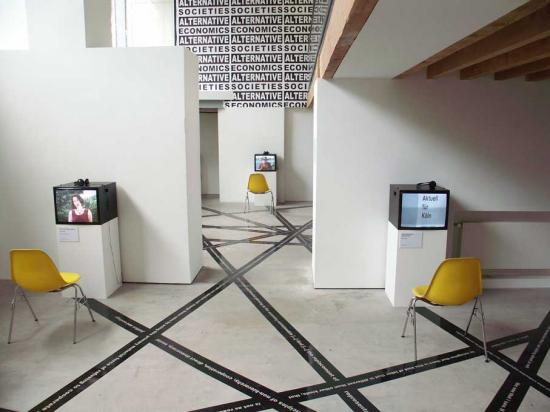
What is interesting is that the more we learn about the connections between capitalism and environmental catastrophe – the more self-reflection we undertake – the more ‘responsibility’ we inherit. In his famous essay exploring the moral differences between active and passive action Killing and Starving to Death, James Rachels illuminates this notion:
“There is a curious sense, then, in which moral reflection can transform decent people into indecent ones: for if a person thinks things through and realises that he is, morally speaking [in the wrong]… his continued indifference is more blameworthy than before.” (Rachels 2006, p.73)
And so the self-reflexive artist enters into a spiral. The more knowledge that they research and acquire – the more their conscience is likely to compel them to act. The question then becomes whether art is the most efficient way of effecting real change.
According to Artur Zmijewski, his recent work Democracies – a series of documentary clips depicting different protest movements from around the world – is not art. “Art”, according to Zmijewski, “is too weak to present political demand” (Prince 2009, p.6). Artists have in the past reached a similar conclusion – turning to existing political systems as a more direct means of effecting change. In 1980 Joseph Beuys was instrumental in setting up the Green Party in Germany, running as its candidate for the European Parliament, and, in 1988 Maria Thereza Alves co-founded the Green Party in Brazil. In a recent lecture Alves points out that it becomes the role of the artist to “judge in each situation whether art or politics provides a better solution” (Alves 2010).

As well as proposing theoretical solutions in book form, Superflex have also attempted to find practical solutions to real life problems in Africa. Although falling under the umbrella of their artistic practice, these projects seem more akin to the sort of thing you might expect to see being pioneered by a charity or a development agency. In 1996-7 they worked with engineers to develop the Supergas system, which is capable of turning compostable waste in the form of human / animal dung into “sufficient gas for the cooking and lighting needs of an African family”, thereby allowing them to “achieve self-sufficiency in energy” (Superflex 1997). The realisation of the Supergas system seems to epitomise the marriage between creative thinking and functionality which Araeen calls for by presenting the example of the desalination plant. What is interesting about this project, and indeed Beuys’ and Alves’ involvement in Green politics, is how it shifts our perception of the role of the artist when viewed as an important component part of a wider practice…
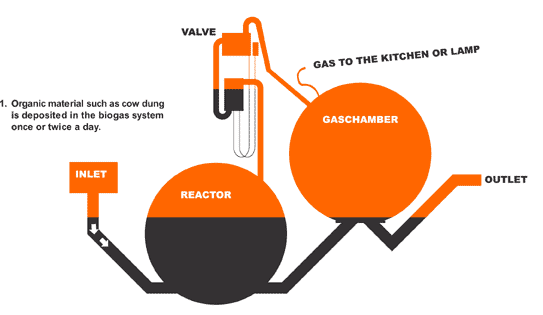
It has been suggested that the most successful campaigning bodies, such as Greenpeace, function “through multi-pronged channels of official, semi-official and illicit activity to negotiate specific ends” (Perry 2010, p.8). They operate under several different ‘hats’ – as a registered charity for raising funds (sometimes even stooping so low as to employ the cynical marketing strategies of the ‘charity-mugger’ on the street) and, at once, as a band of renegade activists aboard the Rainbow Warrior causing real disruption to cruel and exploitative practices and playing tactical media games. They demonstrate a “positive disengagement” (Fisher 2006) from the mainstream, coupled with a savvy co-option of the system, where it clearly presents itself as a more productive solution.
It is possible that the new model for a ‘reconciled artistic practice’ could take a similar form, where the artist (or preferably the collective of artists) balances a variety of activities across different fields. Described as “a group of freelance artist-designer-activists committed to social and economic change” (Myers 2007), Superflex do not ‘abandon’ the art world altogether and, in addition to the projects described above, they continue to work on commissions for its major institutions. For example, in 2009 they made a series of short films The Financial Crisis (Session I-V) for the art market’s number one annual trade fair – Frieze. Like the Lab of ii and following in a long lineage of institutional critique, Superflex appear to understand the benefits of being able to use the system by infiltrating it, criticising and beginning to change it from within.
In now seems evident that our success at adapting to this multi-pronged mode of operation, which straddles real political action, activism and art world insider jobs, depends on our flexibility in approaching different tasks – our ability to wear these different ‘hats’ with conviction and our adeptness at switching between roles. So here it becomes possible to identify the second of the characteristics of neoliberalism which we might aim to salvage. For it is “the very hallmarks of management in a post-Fordist, Control society” – our ‘flexibility’, ‘nomadism’ and ‘spontaneity'” (Fisher 2009, p.28) which we must now begin utilise, as well as our ability to cope with and adapt to change. Both very useful skills to have as the temperatures begin to rise and the food stocks begin to run low.
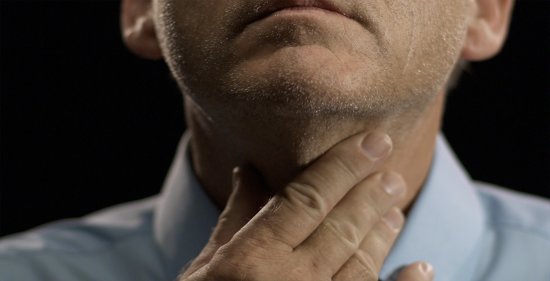
The final characteristic particular to the career-minded artist, which we must aim to reconfigure as central to our new roles in the twenty-first century, is our work-ethic, which results from our comparatively high levels of intrinsic motivation (Abbing 2002, p.82). The acceleration of work rates is something which has developed across the board under neoliberalism to the extent that we are now “bound” to our work in an “anxious embrace”…
“Managers, scientists, lobbyists, researchers, programmers, developers, consultants and engineers, literally never stop working. Even their sex lives serve to augment productivity.” (The Invisible Committee 2009, p.47)
However, it is the artist’s ability and willingness to work twenty-four-seven often in situations completely removed from wage-labour relations, that makes us ‘exceptional’ (Abbing 2002) and offers the potential, even, to act as a paradigm for a general approach to work in a world beyond capital. For it is this position of “radical autonomy” which presents the opportunity for “real education of our socialised senses and human potentials that releases development in all directions” (Ray 2009, p.546). We continue, over the course of our lives, to relentlessly acquire knowledge, self-reflect and develop, adapt, evolve and act – not for money, but because something inside us – something inherent in our ‘character’ – compels us to. If we could only succeed in “freeing” a small fraction of this exceptional motivation “from the self-destructive narcissist ego” (Araeen 2009, p.683) and releasing it in a more selfless and functional direction, it could still be a hugely positive force for change.
Following Aristotle’s classic assertion that moral excellence is found in a person’s rational capacity to choose the mean between extremes (Mautner 2005, p.43), the introduction to the Cambridge reader on Altruism, in which Badhwar’s essay is published, suggests that:
“The most challenging task of a moral theory is to strike a balance between the weight we give to our own interest and the weight we give to those of others. A theory that directs us to give too much to others is as deficient as one that directs us to give too little.” (Paul et al. 1993, p.ix)
And, so it seems that ‘a reconciled practice’ will also, to a certain extent, be about compromise. It will be about attempting to ‘strike a balance’ between the time we invest in each of the various facets of our activity – direct political action or more conventional art world activity – and about how we best use our judgement as to when to focus on one thing over another. If we can achieve this equilibrium in our ‘multi-pronged approach’ to practice, and indeed in our lives in general, then this is perhaps also where we will find our “private satisfaction” (Abbing 2002, p.82): our happiness.
In a recent interview Ranciere reminds us “that there are certain situations where only reality can be taken into account – there is no room for fiction” (Charlesworth 2010, p.75). What this suggests is that perhaps the balance between the ‘selfish’ and ‘selfless’ activity which artists undertake will only really begin to shift when we are directly confronted with the realities of climate change. As James Lovelock suggests it may well take until the point of real global disaster – such as an event on the scale of the Pine Island glacier breaking off into the ocean causing tsunamis and an immediate and permanent sea rise of two metres (Hickman 2010, p.12) – until we are, through absolute necessity, able to totally reconfigure our motivations. Perhaps only when we do come face-to-face with this “worst kind of encounter with reality” (Kingsnorth & Hine 2009, p.11) will we, as artists, be able to assume our fully functional role in society.
When Franny Armstrong, founder of the 10:10 Campaign, says “if you’re not fighting climate change or improving the world, then you’re wasting your life” (Armstrong 2009a, p.8), she is essentially reinforcing the ‘wager’ set out in our ‘plan of action’. However the future pans out, do you really want to look back on this pivotal moment in the history of our species and say ‘I did nothing’, ‘I did not make a stand’, or do you want to be able to say the opposite and to retain what should be our most commanding of all human motivations – our integrity.
——-
Abbing, H., 2002. Why Are Artists Poor?: The Exceptional Economy of the Arts, Amsterdam: Amsterdam University Press.
Alves, M.T., 2010. The Friday Event. The Glasgow School of Art. Available at: www.gsaevents.com/fridayevent/alves [Accessed April 25, 2010].
Araeen, R., 2009. Ecoaesthetics: A Manifesto for the Twenty-First Century. Third Text, 23(5), 679-84.
Araeen, R. & Appignanesi, R., 2009. Art: A Vision of the Future. Third Text, 23(5), 499-502.
Armstrong, F., 2009a. Franny Armstrong: If you’re not fighting climate change or improving the world, then you’re wasting your life. The Guardian, 8.
Armstrong, F., 2009b. What is 10:10? 10:10 Campaign website. Available at: www.1010uk.org/1010/what_is_1010/arms [Accessed April 10, 2010].
AVOID, 2010. Will the Copenhagen Accord avoid more than 2C of global warming? AVOID website. Available at: ensembles-eu.metoffice.com/avoid [Accessed May 3, 2010].
Badhwar, N.K., 1993. Altruism Versus Self-Interest: Sometimes a False Dichotomy. In Altruism. Cambridge: Cambridge University Press, pp. 90-117.
Bey, H., 1994. Immediatism, Oakland, California: AK Press.
Blackburn, S., 2009. Do we need a new morality for the 21st century? The Guardian Culture Podcast. Available at: www.guardian.co.uk/culture/audio/2009/nov/02/cambridge-festival-of-ideas.
Bradley, W. et al. eds., 2006. Self-organisation / Counter-economic Strategies, New York: Sternberg Press.
Brown, W., 2009. What will be the legacy of recession? The Guardian Culture Podcast. Available at: www.guardian.co.uk/culture/audio/2009/oct/26/culture-cambridge-festival-ideas.
Cameron, D., 2009. The Age of Austerity. The Conservative Party website. Available at: www.conservatives.com/News/Speeches/2009/04/The_age_of_austerity_speech_to_the_
2009_Spring_Forum.aspx [Accessed April 25, 2010].
Charlesworth, J.J., 2010. Jacques Rancière Interview. Art Review, (40), 72-5.
CIRCA, 2003. About the Army. Clandestine Insurgent Rebel Clown Army website. Available at: www.clownarmy.org/about/about.html [Accessed April 25, 2010].
Crisp, Q., 1996. The Naked Civil Servant, London: Flamingo.
Curtis, A., 2002. The Century of the Self, BBC 4.
Deleuze, G., 1990. Society of Control. L’Autre Journal, (1). Available at: www.nadir.org/nadir/archiv/netzkritik/societyofcontrol.html.
Fisher, M., 2009. Capitalist Realism: Is There No Alternative?, Ropley, Hampshire: 0 Books.
Fisher, M., 2006. Reflexive Impotence. k-punk blog. Available at: k-punk.abstractdynamics.org/archives/007656.html [Accessed April 25, 2010].
Fowkes, M. & Fowkes, R., 2009. Planetary Forecast: The Roots of Sustainability in the Radical Art of the 1970s. Third Text, 23(5), 669-674.
Guattari, F., 2006. Chaosmosis: An Ethico Aesthetic Paradigm. In Participation. London / Cambridge, Mass.: Whitechapel / MIT Press.
Guyer, P., 2004. Immanuel Kant. In E. Craig, ed. Routledge Encyclopedia of Philosophy. London: Routledge.
Hajek, A., 2008. Pascal’s Wager. The Stanford Encyclopedia of Philosophy. Available at: plato.stanford.edu/archives/fall2008/entries/pascal-wager [Accessed May 3, 2010].
Harvey, D., 2007. A Brief History of Neoliberalism, Oxford: Oxford University Press.
Harvie, D. et al. eds., 2005. Shut Them Down!, Leeds / New York: Dissent! / Autonomedia.
Hickman, L., 2010. James Lovelock: Fudging data is a sin against science. The Guardian, 10-12.
Hillcoat, J., 2009. The Road, Dimension Films.
IPCC, 2001. Special Report on Emissions Scenarios. GRID-Arendal website. Available at: www.grida.no/publications/other/ipcc%5Fsr/?src=/climate/ipcc/emission [Accessed May 3, 2010].
Jordan, J., 2010. On refusing to pretend to do politics in a museum. Art Monthly, (334), 35.
Kerr, A., 2010. Goldsmiths: But is it Art?, BBC 4.
Kingsnorth, P. & Hine, D., 2009. Uncivilisation: The Dark Mountain Manifesto. Available at: www.dark-mountain.net/about-2/the-manifesto.
Lab of ii, 2005. About Us. The Laboratory of Insurrectionary Imagination website. Available at: www.labofii.net/about [Accessed April 25, 2010].
Mamudi, S., 2008. Lehman folds with record $613 billion debt. MarketWatch website. Available at: www.marketwatch.com/story/lehman-folds-with-record-613-billion-debt?siteid=rss [Accessed April 25, 2010].
Mautner, T., 2005. Aristotle. In The Penguin Dictionary of Philosophy. London / New York: Penguin, pp. 40-4.
Mouffe, C., 2007. Artistic Activism and Agonistic Spaces. Art & Research, 1(2). Available at: www.artandresearch.org.uk/v1n2/mouffe.html [Accessed April 25, 2010].
Myers, J., 2007. Superflex. Frieze Magazine, (106). Available at: www.frieze.com/issue/review/superflex [Accessed May 9, 2010].
Paul, E.F., Miller, F.D. & Paul, J. eds., 1993. Altruism, Cambridge: Cambridge University Press.
Perry, C., 2010. Art v the Law. Art Monthly, (333), 5-8.
Priddle, A., 2009. School of Saatchi, BBC 2.
Prince, M., 2009. Art & Politics. Art Monthly, (330), 5-8.
Prince, M., 2010. Remakes. Art Monthly, (335), 9-12.
Rachels, J., 2006. Killing and Starving to Death. In The Legacy of Socrates: Essays in Moral Philosophy. New York: Columbia University Press, pp. 60-82.
Ranciere, J., 2007. Hatred of Democracy, London: Verso.
Ray, G., 2009. Antinomies of Autonomism: On Art, Instrumentality and Radical Struggle. Third Text, 23(5), 537-46.
Ressler, O., 2007. Alternative Economics, Alternative Societies. Oliver Ressler website. Available at: www.ressler.at/alternative_economics [Accessed April 25, 2010].
Sharp, C., 2010. Career Suicide. Art Review, (40), 52-4.
Strawson, P.F., 2008. Social Morality and Individual Ideal. In Freedom and Resentment and Other Essays. London / New York: Routledge, pp. 29-49.
Superflex, 1997. Supergas. Superflex website. Available at: superflex.net/tools/supergas [Accessed May 5, 2010].
Thatcher, J., 2009. Crunch Time. Art Monthly, (332), 5-8.
Thatcher, M., Margaret Thatcher Quotes. About.com website. Available at: womenshistory.about.com/od/quotes/a/m_thatcher.htm [Accessed May 2, 2010].
The Invisible Committee, 2009. The Coming Insurrection, Los Angeles / Cambridge, Mass.: Semiotext(e).
Triandis, H., 1995. Individualism and Collectivism, Boulder, Colorado: Westview Press.
Vonnegut, K., 2003. Knowing What’s Nice. In These Times. Available at: www.inthesetimes.com/article/knowing_whats_nice [Accessed April 25, 2010].
Walker, J., 2002. Left Shift: Radical Art in 1970s Britain, London / New York: I.B. Tauris.
Williams, E.C., 2009. Putting the punk back in salvage (where it was not to begin with). Socialism and/or Barbarism blog. Available at: socialismandorbarbarism.blogspot.com/2009/08/putting-punk-back-in-salvage-where-it.html [Accessed May 4, 2010].
Zizek, S., 2009a. First As Tragedy, Then As Farce, London: Verso.
Zizek, S., 2009b. In Defense of Lost Causes, London: Verso.
Data Soliloquies
Richard Hamblyn and Martin John Callanan
London: Slade Press, 2009
112 pages
ISBN 978-0903305044
Featured image: Data Soliloquies is a book about the extraordinary cultural fluidity of scientific data
Although much has been said about C.P. Snow’s concept of a “third culture”, we haven’t actually reached an understanding between the spheres of science and humanities. This is caused in part by the high degree of specialisation in each field, which usually prevents researchers from considering different perspectives, as well as the controversies that have arisen between academics, exemplified by publications such as Intellectual Impostures (1998) in which physicists Alan Sokal and Jean Bricmont criticise the “abuse” of scientific terminology by sociologists and philosophers. Yet there is a growing mutual dependency of both fields of knowledge, as the one hand our society is facing new problems and questions for which the sciences have adequate answers and on the other scientific research can no longer remain isolated from society. Some scientists, such as the astronomer Roger Frank Malina, have even argued that a “better science” will result from the interaction between art, science and technology. Malina presents as an example the “success of the artist in residence and art-science collaboration programs currently being established” [1], and considers the possibility of a “scientist in residence” program in art labs.
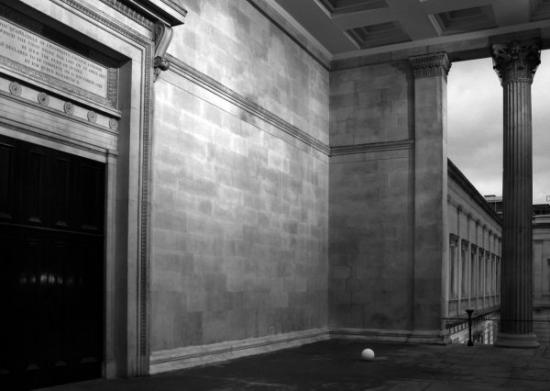
Our relationship with the environment is certainly one of the main problems we are going to face during this century and it is also a subject that brings up the necessary communication between science and society. The UCL Environment Institute [2] was established in 2003 to promote an interdisciplinary approach to environmental research and make it available to a wider audience. While being representative of almost every discipline in the University College London, it lacked an interaction with the arts and humanities. This gap has been bridged by establishing an artist and writer residency program in collaboration with the Slade School of Fine Arts and the English Department. Among 100 applications, writer Richard Hamblyn and artist Martin John Callanan were chosen for the 2008-2009 academic year: Data Soliloquies is the result of their work.
Despite “belonging” to the field of art and humanities, neither Hamblyn nor Callanan are strangers to science and technology. Richard Hamblyn is an environmental writer and historian who has developed a particular interest in clouds, and Martin John Callanan is an artist whose remarkably conceptual work merges art and different types of media. This may be the cause that Data Soliloquies is by no means a shy penetration into a foreign field of knowledge but a solid discourse which presents a richly documented critique of the apparently ineffective ways in which scientists have made society aware of such a crucial problem as that of climate change. The title of the book has been borrowed for a term that Jon Adams, researcher at the London School of Economics, coined to refer to Michael Crichton’s novels, who uses “scientific” facts to give his imaginative plots an aura of credibility. With this reference, the authors state that the way scientific data is presented actually constitutes a narrative, an uncontested monologue: “…scientific graphs and images have powerful stories to tell, carrying much in the way of overt and implied narrative content (…) these stories are rarely interrupted or interrogated.”[3]
As the amount of data regularly stored in all sorts of digital supports increases exponentially, and new forms of data visualisation are developed, these “data monologues” become ubiquitous, while remaining unquestioned. In his text, Hamblyn exposes the inexactitude in some popular visualisations of scientific data, which have set aside accuracy in favour of providing a more eloquent image of what the gathered evidences are supposed to tell. On the one hand, Charles D. Keeling’s upward trending graph of atmospheric carbon dioxide concentration, which according to Hamblyn is “probably the most important data set in environmental science, and has become something of a freestanding scientific icon”[4], or Michael Mann’s controversial “Hockey Stick” graph are illustrative examples of the way in which information displays have developed their own narratives. On the other, the manipulation of data in order to obtain a more visually effective presentation, such as NASA’s exaggeration of scale in their images of the landscape of Venus or the use of false colours in the reproductions of satellite images, call for a questioning of the supposed objectivity in the information provided by scientific institutions.
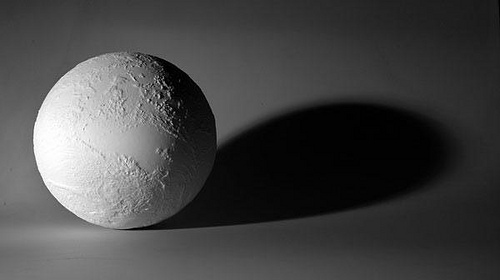
In the field of climate science, the stories that graphs and other visualisations can tell have become of great importance, as human activity has a direct impact on global warming, but this relation of cause and effect cannot be easily determined. As Hamblyn states: “climate change is the first major environmental crisis in which the experts appear more alarmed than the public” [5]. The catastrophism with which environmental issues are presented to the public generate a feeling of impotence, and thus any action that an individual can undertake seems ineffective. The quick and resolute reaction of both the population and the governments in the case of the “ozone hole” in 1985 points in the direction of finding a clear and compelling image of the effects of climate change. As Hamblyn underscores, this is not only a subject for engineers: “the reality of ongoing climate change has yet to be embraced as a stimulus to creativity –in the arts as well as the sciences– or as a permanent and inescapable part of human societal development” [6].
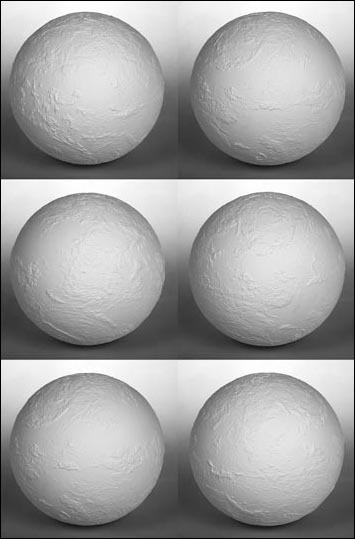
Martin John Callanan took upon himself to develop a creative response to this issue, and has done so, not simply by creating images or objects but by depicting processes. He states: “I’m more interested in systems –systems that define how we live our lives” [6]. A quick look at his previous work [7] will show how appropriate this statement is: he has visited each and every station of the London underground, collected every command of the Photoshop application in his computer, officially changed his name (to the same he already had), gathered the front page of hundreds of newspapers from around the world and engaged himself in many other activities that are as systematic and mechanical as ironic, poetic or simply nihilistic. During his residency, Callanan created to main projects. The first one, Planetary Order, is a globe in which the patterns of the clouds on a particular date (February 6th, 2009) have been sculpted. The artist composed the readings of NASA’s cloud monitoring satellites in a virtual 3D computer model, which was then laser melted on a compacted nylon powder sphere at the Digital Manufacturing Centre at the UCL Bartlett Faculty of the Built Environment. The resulting object is a sculpture, an artwork more than any sort of model in the sense that it develops a discourse beyond the actual presentation of data. An impeccable white sphere textured by its subtle protuberances, the globe evokes the perfection of an ancient marble sculpture while presenting us with an uncommon view of the Earth, covered with clouds. The clouds, which are usually erased in the depictions of our planet in order to let us see the shapes of the continents (the land which is our dominion), become an icon of climate change and the image of an order which is, in all senses, above us. Callanan freezes the planetary order of clouds in an impossible map, a metaphorical object which appears to us as a faultless, yet fragile and inscrutable machine.
The second of Callanan’s artistic projects is the series Text Trends. Using Google data, the artist has collected the number of searches for selected terms related to climate change in a time range of several years (from 2004 to 2007-2008). With this data, he has generated a series of minimalistic graphs in which two jagged lines, one red and the other blue, cross the page describing the frequency of searches (or popularity) for two competing terms. The result resembles an electrocardiogram in which we can see the “life” of a particular word, as opposed to another, in a simple but eloquent dialogue of abstract forms. Callanan has chosen to confront terms in pairs such as “summer vs. winter”, “climate change vs. war on terror” or “global warming”. Simple as they may seem, the graphs are telling and constitute and visual summary of the book whilst suggesting many other reflections. The final conclusion is presented in the last graph, in which the perception of climate change is expressively described by the image of a vibrant line for the word “now”, much higher in the chart than the flat line for the word “later”.
Pau Waelder
Arriving at the homepage of Ten Thousand Cents, an Internet artwork by Aaron Koblin and Takashi Kawashima, a mottled image of a one hundred dollar bill slowly fades into view. Ben Franklin looks out sedately. Mousing over the large image, the cursor is replaced with a small red rectangle. And here lays the beauty of the project; with the click of each rectangle, a zoomed in portion of the one hundred dollar bill is revealed. On the left side is a high-resolution photograph of that tiny portion of the bill. On the right side, a real-time moving image plays, revealing how the image was drawn by a human hand in a drawing program created by Koblin and Kawashima. There are, in fact, 10,000 such rectangles and each was created by a Turker through Amazon’s Mechanical Turk marketplace.
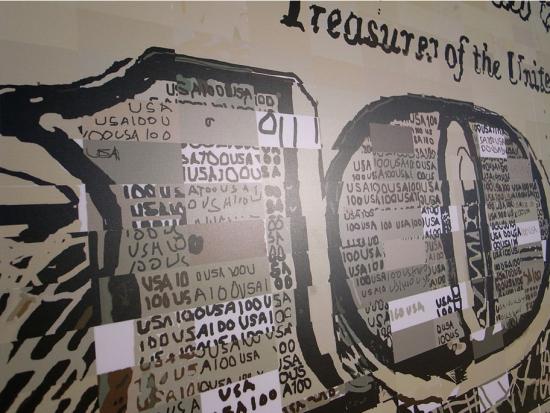
Over the course of five months (from November 2007 to March 2008) Koblin and Kawashima posted tasks, known as HITs, Human Intelligence Tasks, on Amazon’s Mechanical Turk site. Having broken down an image of a one hundred dollar bill into 10,000 sections, Turkers were tasked with redrawing their assigned section. Each Turker was paid $.01 for the task, making the total payment of drawing a one hundred dollar bill one hundred dollars. (Prints of the project can also be bought for one hundred dollars. All proceeds are donated to the One Laptop per Child (OLPC) project) Each Turker worked anonymously, unaware that what they were drawing was a section of a bill or that their work would eventually be combined with other Turkers’ work to create an art project. The variability is endless. Some Turkers methodically draw in the lines and painstakingly shade in boxes. Some quickly slash the paint tool across the page; one imagines they felt they had better things to do with their time. Some are cheeky, using the space for digital graffiti or messages like “I love U.” Most copy the image exactly. Yet, with the differing movements and tempos, every one suggests a different story and different person behind the tool. I suggest you take a few minutes and watch the unfolding scenes. They are oddly, satisfyingly banal and beautiful.
The project and its presentation on the website are undoubtedly elegant. Yet, the conceptual work behind the piece is a bit murkier. The project description states, “The project explores the circumstances we live in, a new and uncharted combination of digital labor markets, ‘crowdsourcing,’ ‘virtual economies,’ and digital reproduction.” Big and important themes. What are the implications of crowd-sourcing for creative work? For any kind of paid work? Where is the distinction between work and play? Creativity and re-presentation? In this deeply networked age, what are the evolving relations between individual and collective action?
The Mechanical Turk, made by Wolfgang de Kempelen in 1769, caused a sensation in 18th and 19th century Europe, first for its existence as a seemingly intelligent chess playing automaton – one who could beat Ben Franklin and even Napoleon in chess – and subsequently, for being an infamous hoax. Inside of the automaton was in fact a man, a skilled chess player. The Mechanical Turk was no thinking machine. It was an elaborate performance of concealment and human skill.

In 2005, in an ironic (and some might say distasteful) turn of events, Jeff Bezos of Amazon named a new business venture, Amazon Mechanical Turk. The idea was to make a digital marketplace that capitalized on the unique intelligence of human agents. Broken down into microtasks, known as HITs, Mechanical Turk provides a means to accomplish those tasks that humans can do quickly but which would take computers much longer to do, for instance, tagging images, taking surveys or transcribing audio recordings. This Mechanical Turk is also a performance of human skill, one that revels in its basis in human intelligence – Bezos calls it “artificial artificial intelligence” – but one that also operates within a mode of concealment and indeed, alienation.
As Katharine Mieszkowski of Salon wrote about Mechanical Turk in 2006, “There is something a little disturbing about a billionaire like Bezos dreaming up new ways to get ordinary folk to do work for him for pennies.” Critics of Mechanical Turk abound, and their objections point to the insidious labor relations that Mechanical Turk enforces, implying that Mechanical Turk approaches a virtual sweatshop. The system was designed for employers, not employees. The earnings of Turkers fall within a gray area of digital labor, officially being classified as contractor work, subject to high self-employment taxes and no option for benefits. Although a rating system protects employers, in so far as employers can choose to reject a work offer from a Turker or refuse to pay a Turker if the work is completed unsatisfactorily, no such system protects Turkers. As advocates of a Turker Bill of Rights have pointed out, there is no effective outlet within Mechanical Turk for Turkers to voice grievances against employers. What does exist is a vibrant community forum, Turker Nation, where Turkers advise each other on known scammers.
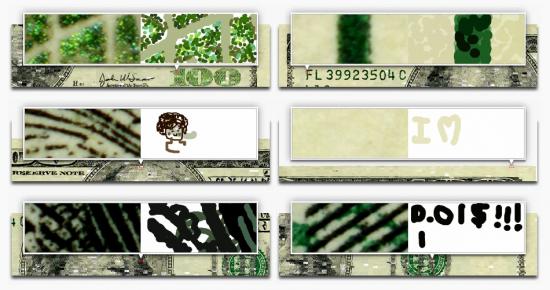
Moreover, although anecdotally Mechanical Turk is understood as more game or past-time than employment, a recent study out of University of California, Irvine’s Informatics Department points out that almost a third of Turkers rely on Mechanical Turk as a source of income. Another study found that nearly half of Turkers report their motivation for working as income related. For this population of Turkers, it is troubling to consider the possibilities of exploitation and unfair labor practices.
In this light, I find the artists’ neat appropriation of the mechanisms of Mechanical Turk unsettling. The implications and the stakes of Mechanical Turk as an economic system are left untouched. And considering that the artists chose to create a representation of money and employ Turkers, these dimensions of economy and labor are present but disappointingly unaddressed.
Yet, the moments in the project that remain in my mind’s eye like lovely specters as I glance at the dollar bill that I traded for coffee this morning, are the movements of the individuals who drew each section. On this level, the project is like a fantastic cabinet in which each drawer opens onto a new wonder. Perhaps what Ten Thousand Cents effectively offers is not a statement about labor politics or late capitalism’s continuing ability to provide structures for domination and exploitation. Perhaps Ten Thousand Cents asks us to take a different step toward understanding “the circumstances we live in,” revealing the endless variability of individual expression. In this networked age, we often act collectively, that is, together, parallel, most often without knowledge of the larger directions toward which our actions will lead. Collaboration, laboring together, is notion whose meaning is expanding and changing in the 21st century. What remains, even among protocols and code, is individuality. Though we are subsumed by larger structures, we do have spaces for self-expression and self-formulation. Leave an exploration of the limits of these spaces to others – and I surely believe we must consider the limitations. Yet we must also explore and value the spaces of possibility and the domains where we are active agents. We are called to remember that every artifact is irreducible to its mere instance in the world – it is a sum of processes and individual actions.
Of course, “the circumstances we live in” also requires us to keep in mind the bottom line. It’s all about the Benjamins, as the phrase goes. In response to a HIT, no less, requesting an answer to the question, “Why do you complete tasks in Mechanical Turk” one Turker wrote, “I do it for the money!”
Featured image: Photograph of a creative experiment on more intelligent modes of inhabiting the planet
Open_Sailing‘s biggest achievement is perhaps to have turned our future into an open source project. Led by a group of enthusiasts, gathered around the idea of “we don’t know what will happen, but together we can invent our future and cope”, the project puts forward a very ambitious, action-driven, experiment-led, way of thinking forward. After meeting with the founder of the project, Cesar Harada, Open_Sailing proved to be a much more complex enterprise than I originally thought.
Initially the project started by mapping threats, the idea being that threats can produce something else than fear. Indeed Cesar Harada, was decided to turn threats into design constraints. This constitutes an interesting methodology to deal with the current climate of fear. The exploitation of threat has become the standard procedure to stabilize a permanent state of emergency. Mobilising virtual threats, states acquire exceptional powers that facilitate the implementation of ever more pervasive measures of control. The current case of swine flu is the last of a long list of exercises of mass modulation of fear. War on terror is the paradigmatic one. On the other hand, and following the warnings of the Maya calendar, all sorts of popular tales for an apocalyptic 2012 have started to populate the planet.
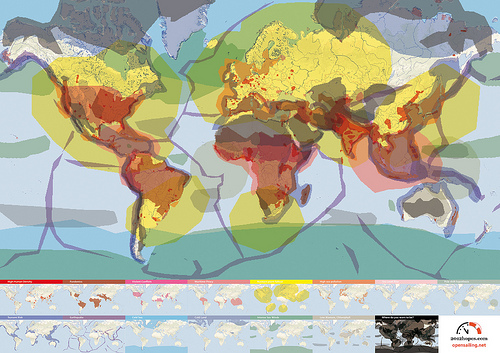
The role of Open_Sailing is to function as a catalyst that channels all this energy into the production of a better future. In short, its role is to transform fear into hope. Certainly this functioned as a strong attractor for new collaborators and soon the team started to grow. After putting together large amounts of real-time data about all sorts of dangers such as tsunami, terrorist attacks, nuclear accidents or pandemics, it became clear that the potential safest spots on earth were mostly located at sea. That led to the idea of designing the infrastructure necessary to inhabit those spots based on the concept of ‘Open Architecture’. Fear had been successfully turned into an active force unleashing the creative process. Inspired by this initial concept the Open_Sailing team started a very intense process of scientific, technological, architectural and artistic research that resulted in a first prototype awarded at Ars Electronica: Open_Sailing_01.
“A drifting village of solid and comfortable shelters surrounded by flexible ocean farming units: fluid, pre-broken, reconfigurable, sustainable, pluggable, organic and instinctive.” [1]
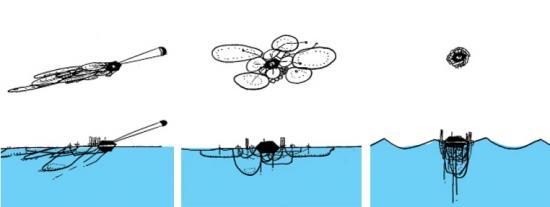
This drifting village, which is about 50 metres in diameter and can host four people, is designed to respond to its environment, being able to become compact and endure severe weather conditions, and spreading out to harvest in calm situations. Open_Sailing_01 was supposed to set sail last May 2009 but mis-coordination in the production with Ars Electronica delayed the plan. In the meantime, small intermediary prototypes of different modules are being built and tested constantly, but the Open_Sailing team hopes to put together the main modules of the International_Ocean_Station for general testing by the summer 2010.
One other important thing that came across in the interview with Cesar Harada was how soon after Open_Sailing was set in motion, it became clear that the project was not only about escaping the problematics of our society. It was definitely not an idealistic utopia happening elsewhere and starting a world from scratch. Rather than an exercise of escapism, they realised that the idea of inhabiting those sites where there is no threat had become an experimental laboratory where to grasp the future. Indeed Open_Sailing is very much about finding ways to face and deal with the very problems of our world.
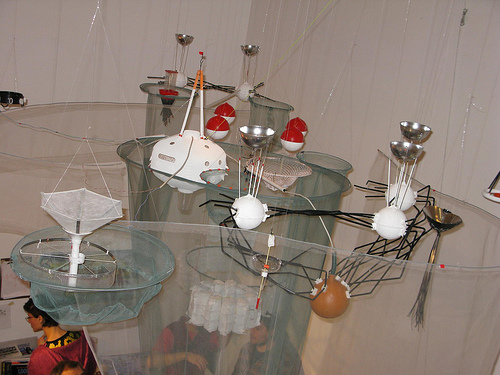
“Be it overpopulation, global warming or energy conflicts, we are living in a time where ‘Apocalypse’ beckons. We need to collectively invent and spread bootstrapping DIY technologies for the forthcoming challenges, not only to survive but to re-invent how we inhabit this planet.” [2]
This became particularly obvious when the team flew to Morocco to try out some live-saving structures. Between the coast of Morocco and the Canary Islands in Spain hundreds of illegal immigrants die every year at sea. A high-seas permanent shelter would provide a low cost life-saving facility for the migrants.
This particular instance is also paradigmatic of the way in which experimentation is carried within the project. Future thinking is developed through material instantiations. This very characteristic process of design and engineering disciplines gives Open_Sailing an exciting palpability, a materiality, a commitment with actualisation that accounts for its potential to bring about real change. Commitment with results drives the project away from the artistic disciplines, but the poetics of the project undeniably brings them back together. A project that in a year of development has acquired such a level of complexity necessarily had to go through a very intense and accelerated process of conceptualisation and experimentation. And there comes the figure of the enthusiast, an experimental survivalist who is willing to take a plane the morning after an idea has come up to participate in a military training testing life-saving technologies.
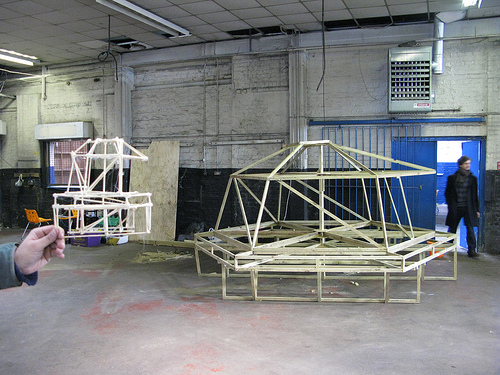
Even more interesting is perhaps how this enthusiasm becomes contagious and the project starts to work as a truly open source venture. Open_Sailing becomes a powerful autonomous entity that keeps bringing people in a dividing itself into labs. Each new lab engages a whole new group of contributors, with a new set of preoccupations and hopes. The project proves to be definitely not about the implementation of a master plan or utopian blue print, but an example of how open source can literally be applied to the construction of alternative worlds. Within these labs we find different experimental research projects focusing for example on mesh networking; pollution, climate and natural reserve monitoring; sustainable aquaculture in high seas; or energy autonomous systems that generate electricity through wind, sun or wave power.
Now, there is of course the problem of co-option. The research being done is a very useful material with infinite commercial and even military applications. But perhaps this is not something that compromises the success of the project. Rather, its value lies in its capacity to encourage people to co-design their own futures. It is more about joining people that want to create than attracting those that want to buy. Surely, it is the process of creation of alternative that’s been set in motion that is truly significant, even more than the technologies being produced. Furthermore, Open_Sailing manages to reverse the process of co-option, the same way it reverses the effects of threat. Collaborators turn to scientific institutions, corporations, military research, as a useful resource, and then open up the knowledge acquired. This is not a new ‘green design’ product for the consumerist society, it is a spark for a collaborative rethinking of the world.
Stanza, Ximena Alarcón, Peter Cusack, Furtherfield.org, Chris Joseph, Francisco Lopez, Katharine Norman, Aki Pasoulas, Pedro Rebelo, Ambrose Seddon
View Sound Ecologies commission by Chris Joseph.
A day of presentations, participatory workshops and informal performance around themes of urban sound, networked sound, locative media and acoustic ecology the relationship between living beings and their environment, as mediated by sound. Featuring Furtherfield.org (Ruth Catlow and Marc Garrett), and guest speakers Stanza, Peter Cusack, Ximena Alarcón and Pedro Rebelo.
The event is free, and open to anyone interested, including musicians, artists, curators, technologists; ecologically inclined thinkers, makers and doers of all kinds.
BOOKING IS ESSENTIAL
Space is limited. Please reserve your place here.
We hope to offer wireless access. If you wish to have wireless access you MUST email in advance your name, computer model and MAC address to Katharine Norman at Katharine.norman@city.ac.uk by 7 November 2009.
We invite you to contribute sound and AV media on the theme of ‘urban sound’ to VisitorsStudio for incorporation into the mix by participants on the day.
Bring headphones to take part in the VisitorsStudio workshop.
Wear comfortable (and quiet!) clothing and shoes for the soundwalk, and be prepared for rain.
Maps and information about getting to City University London: the Performance Space and Lab are on the lower ground floor of the College Building, entrance on St John Street.
View more details of the day’s events here.
SOUND ECOLOGIES: LISTENING IN THE CITY is a partnership event funded by LCACE convened by Katharine Norman, Department of Music, City University London and Furtherfield.org
Ximena Alarcón – Sounding Underground: Linking urban soundscapes via commuters memories.
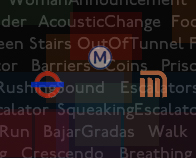
Ximena’s practice-led research project studied commuter’s perceptions towards their daily life soundscape in underground public transport systems, taking the case studies of Paris and México City as counterparts of the London Underground. The results are the basis for the creation of a score that becomes an interactive user’s interface in an Internet-based sonic environment: Sounding Underground. Interactivity, understood as “Listening and Remembering”, has taken two main forms: navigation, including written feedback, on the web, and a off-line networked improvisation for groups of four commuters who used their voices to express memories. This approach strives to make commuters contributors in the creation of these environments, and furthermore performers and narrators of their commuting experience. Ximena Alarcón, born in Bogotá, Colombia, in 1972, is a multimedia artist specialising in soundscape, collective memory and interactivity. She completed her PhD in Music, Technology and Innovation at De Montfort University in 2007 with a work entitled An Interactive Sonic Environment derived from commuters’ memories of soundscape: a case study of the London Underground. For the last two years she has been expanding and implementing this work at De Montfort’s Institute of Creative Technologies (IOCT), thanks to an Early Career Fellowship award given by The Leverhulme Trust. One of her objectives is to find a balance between artistic and socially based work within specific soundscapes that involve virtual and real migrations, and with people who are usually outside the artistic scene, doing so by creating narratives in new media.
Peter Cusack
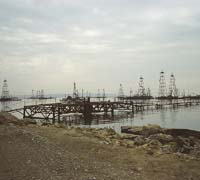
Peter’s presentation will focus on the ‘Your Favourite London Sound’ project that aims to discover what Londoners find positive in their city’s soundscape, an idea that has been repeated in other world cities including Beijing and Chicago. Peter is based in London where he works as a sound artist, musician and environmental recordist with a special interest in environmental sound and acoustic ecology. Projects move from community arts to research into the contribution of sound to our senses of place to recordings that document areas of special sonic interest, e.g. Lake Baikal, Siberia, and Xinjiang, China’s most western province. Recently involved in ‘Sound & the City’ the British Council sound art project in Beijing 2005. His current project ‘Sounds From Dangerous Places’ examines the soundscapes of sites of major environmental damage, e.g. Chernobyl, the Azerbaijan oil fields, controversial dams on the Tigris and Euphratees river systems in south east Turkey. He produced ‘Vermilion Sounds’ a monthly environmental sound program on ResonanceFM radio, London, and is a Senior Lecturer in ‘Sound Arts & Design’ at the London College of Communication. Recently appointed research fellow on the Engineering & Physical Sciences Research Council’s multidisciplinary ‘Positive Soundscapes Project’.As a musician he tours regularly at home and abroad. Musical collaborators include Clive Bell, Nic Collins, Alterations, Chris Cutler, Max Eastley, Annette Krebs and Viv Corringham.
Furtherfield.org – Media Art Ecologies
Furtherfield.org have worked with Katharine Norman at City University London to develop SOUND ECOLOGIES: LISTENING IN THE CITY. Furtherfield.org supports experimental practices at the intersection of art, technology and social change. They are currently working to increase opportunities for art making and appreciation, critical debate, exchange and participation in emerging ecological media art practices, and the theoretical, political and social contexts they engage.
Chris Joseph – digital writer and artist
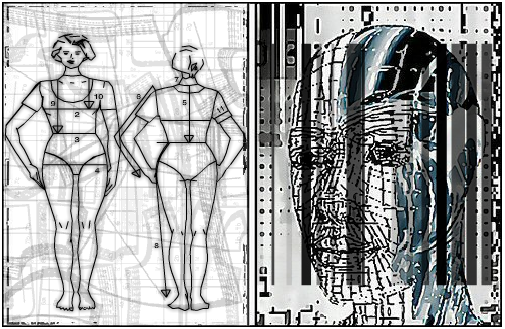
Chris Joseph has been commissioned to provide a visual interpretation of the day’s themes (watch this space!)
Chris Joseph creates electronic literature, multimedia and interactive art, which may include text, images and video, sounds, music and reader/viewer participation. His ongoing projects include Flight Paths, a ‘networked novel’; Inanimate Alice, a series of interactive multimedia stories; and remixworx, a collaborative digital remixing community. Other projects are NRG, a bicycle-powered interactive multimedia installation around the themes of sustainable energy, and The Breathing Wall, a digital novel that responds to the reader’s breathing rate. From September 2006 until September 2008 he was the first Digital Writer in Residence at the Institute of Creative Technologies in De Montfort University, Leicester, UK.
Francisco Lopez – Buildings (New York)
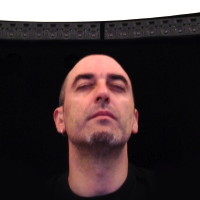
Francisco López is a major international figure in the sound art and experimental music scene. Over the past 30 years he has developed an absolutely personal and iconoclastic sonic universe based on a profound listening of the world. Destroying boundaries between industrial sounds and wilderness sound environments, shifting with passion from the limits of perception to the most dreadful abyss of sonic power, proposing a blind, profound and transcendental listening, freed from the imperatives of knowledge and open to sensory and spiritual expansion. He has realized hundreds of concerts, projects with field recordings, workshops and sound installations in 60 countries of the five continents. His extensive catalog of sound pieces (with live and studio collaborations with over 100 international artists) has been released by more than 200 record labels worldwide, and he has been awarded three times with honorary mentions at the competition of Ars Electronica Festival.
Review of Buildings (New York).
Katharine Norman – Sound Ecologies
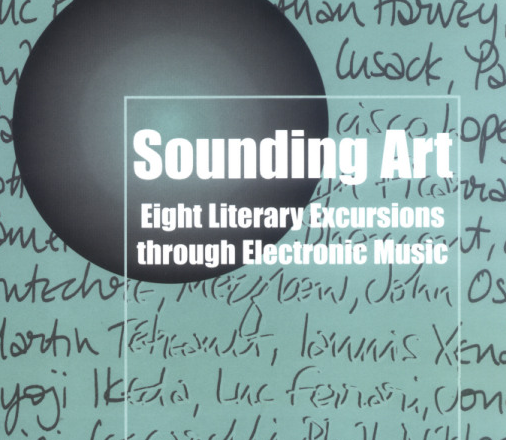
Katharine Norman composes computer and electronic music, often using documentary sound and voice, and increasingly writes texts. Her PhD (Princeton, 1993) focused on documentary sound in sound-based art and she has more recently completed a postgraduate diploma in creative writing and new media. She has various bits of sound art and music and writing on the web, and on CDs – including two solo cds: “London” (NMC label) and “Transparent things” (Metier). Increasingly, she writes about music, in particular electroacoustic and electronic music – Sounding Art: Eight Literary Excursions through Electronic Music, a book of experimental writings on recent electronic music (of many kinds and approaches) was published by Ashgate in 2004. She is currently head of the department of Music at City University London, and has previously taught at Goldsmiths (Music), Simon Fraser University (Communications) and Anglia Ruskin University (English).
Aki Pasoulas – City Soundwalk
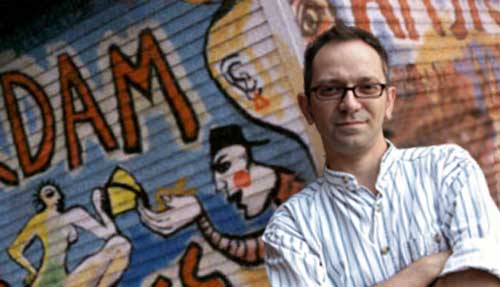
Aki Pasoulas is a London-based composer of electroacoustic and acoustic music. He lectures at the Universities of City London, Middlesex, and the Arts London, and he is finalising his doctoral research at City University London under the supervision of Denis Smalley. Aki’s research project, funded by the Arts and Humanities Research Council (AHRC), investigates the listener’s experience and interpretation of time passing, and the interrelationships among timescales in electroacoustic composition. Further research interests include psychoacoustics, microsound, spatialisation, sound poetry and the use of voice in non-western musics. Aki originally studied and worked as a graphic designer, before embarking into music studies at the Open University and then at Goldsmiths College, University of London.
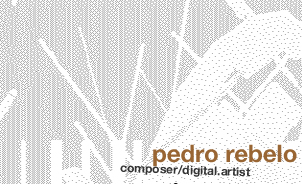
Will present a talk on some recent work linking locative media with network performance. Pedro is a composer/digital artist working in electroacoustic music, digital media and installation. His approach to music making is informed by the use of improvisation and interdisciplinary structures. He has been involved in several collaborative projects with visual artists and has created a large body of work exploring the relationships between architecture and music in creating interactive performance and installation environments. Pedro conducts research in the field of digital media, interactive sound and composition. His writings reflect his approach to design and composition by articulating creative practice in a wider understanding of cultural theory. Pedro was Visiting Professor at Stanford University (2007) and the Music Chair for the 2008 International Computer Music Conference. He has been Director of Research at the Sonic Arts Research Centre and is now Director of Education at the School of Music and Sonic Arts, Queen’s University Belfast.
Ambrose Seddon – City Soundwalk
Ambrose Seddon has a background in rock and electronic pop music. After graduating with a degree in music from Goldsmiths College, University of London, he spent a number of years teaching, while writing, producing and performing in various bands, with releases through a number of independent record labels. He completed a Masters degree in electroacoustic composition at City University, London, in 2004, and now continues his studies at City University as a PhD student, supervised by Denis Smalley. His music has been performed in concert internationally, and has been awarded 1’st prize in the Visiones Sonoras Electroacoustic Music Composition Competition, Mexico, 2006, and the European Composition Prize at the International Computer Music Conference, Copenhagen, 2007.
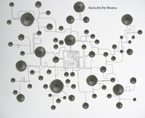
Stanza’s artworks explore artistic and technical opportunities to enable new aesthetic perspectives, experiences and perceptions within context of architecture, data spaces and online environments. His presentation will focus on his online and sonic work in relation to urban and networked spaces. Stanza is a London based British artist who specializes in interactive art, networked spaces, installations and performances. His award winning online projects have been invited for exhibition in digital festivals around the world. Work has been shown at The VeniceBiennale, Tate Britain, The Victoria and Albert Museum. Recipient of Nesta Dreamtime Award, AHRC creative fellowship and numerous prizes. All his artworks can be found at www.stanza.co.uk/
Throughout: LISTENING IN THE CITY. A visual interpretation of the day’s themes by Chris Joseph, digital artist in residence.
Performance Space Foyer
10:00-10:30 WELCOME AND INTRODUCTION
Performance Space, City University London
10:30-13:00 LISTENING IN THE CITY: PANEL PRESENTATIONS AND DISCUSSION
Performance Space
Artistic and research presentations by Stanza, Ximena Alarcón, Peter Cusack and Pedro Rebelo of work with locative media, urban listening, acoustic ecology and networked performance.
13:00-14:00 BUILDINGS (NEW YORK)
Performance Space
A multi-speaker diffusion of Buildings (New York) by Francisco Lopez.
Come in and out, bring your lunch, listen.
14:00-15:30 AFTERNOON WORKSHOP OR SOUNDWALK – All welcome
VISITORSSTUDIO WORKSHOP: URBAN SOUND AND VISION SCAPES
ALG04 (PC lab)
Live AV collaborative mixing led by Marc Garrett, Furtherfield.org (participants please bring headphones).
Places limited.
OR
URBAN SOUNDWALK
Commencing from Performance Space Foyer a City Soundwalk led by Aki Pasoulas and Ambrose Seddon.
15:50-16:00 WORKSHOP PRESENTATIONS
16:00 END
SOUND ECOLOGIES: LISTENING IN THE CITY
Wednesday 18 November 2009, 10am-4pm
City University London, Northampton Square, London EC1V 0HB
SOUND ECOLOGIES: LISTENING IN THE CITY is a partnership event funded by LCACE convened by Katharine Norman, Department of Music, City University London and Ruth Catlow, Furtherfield.org